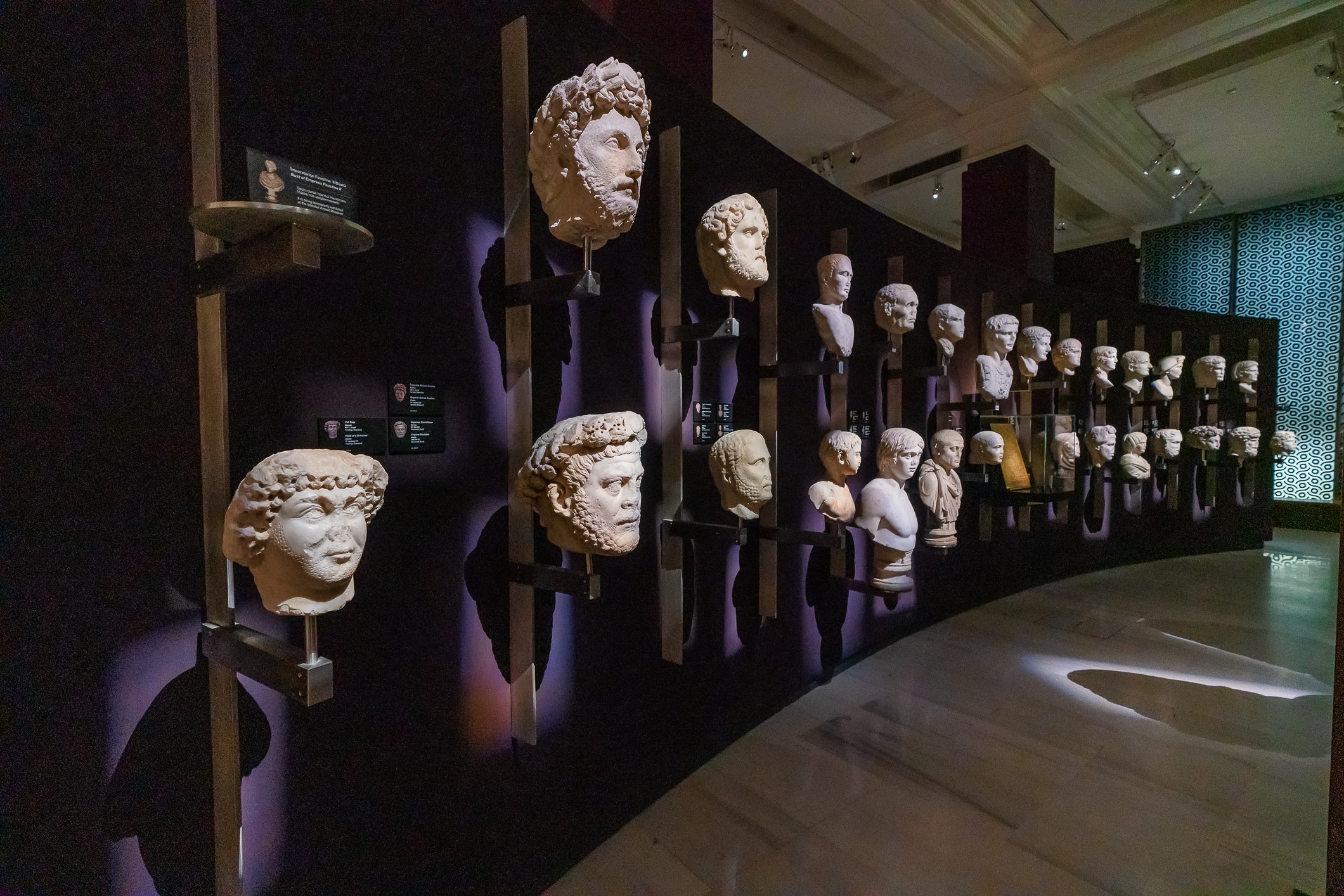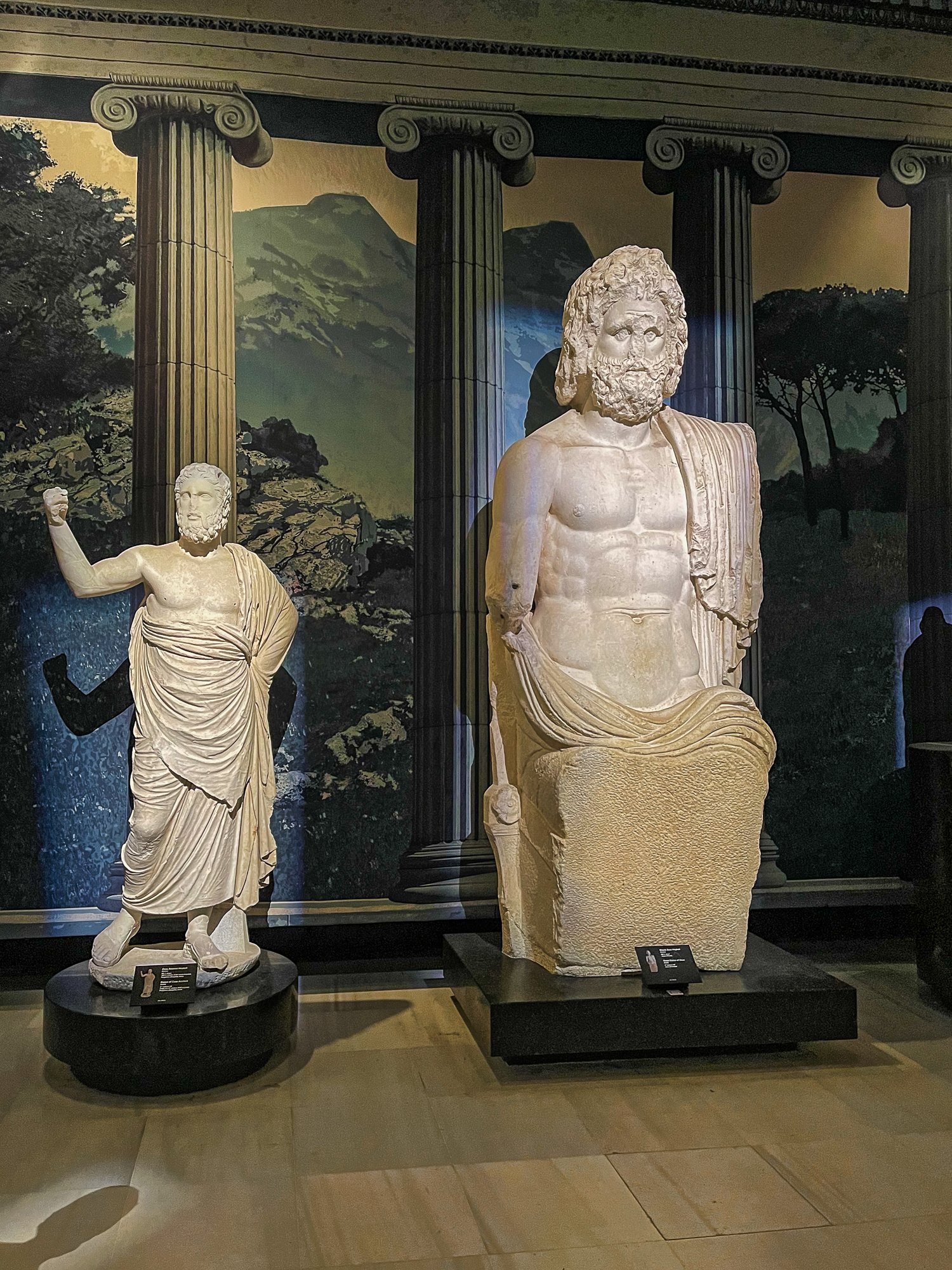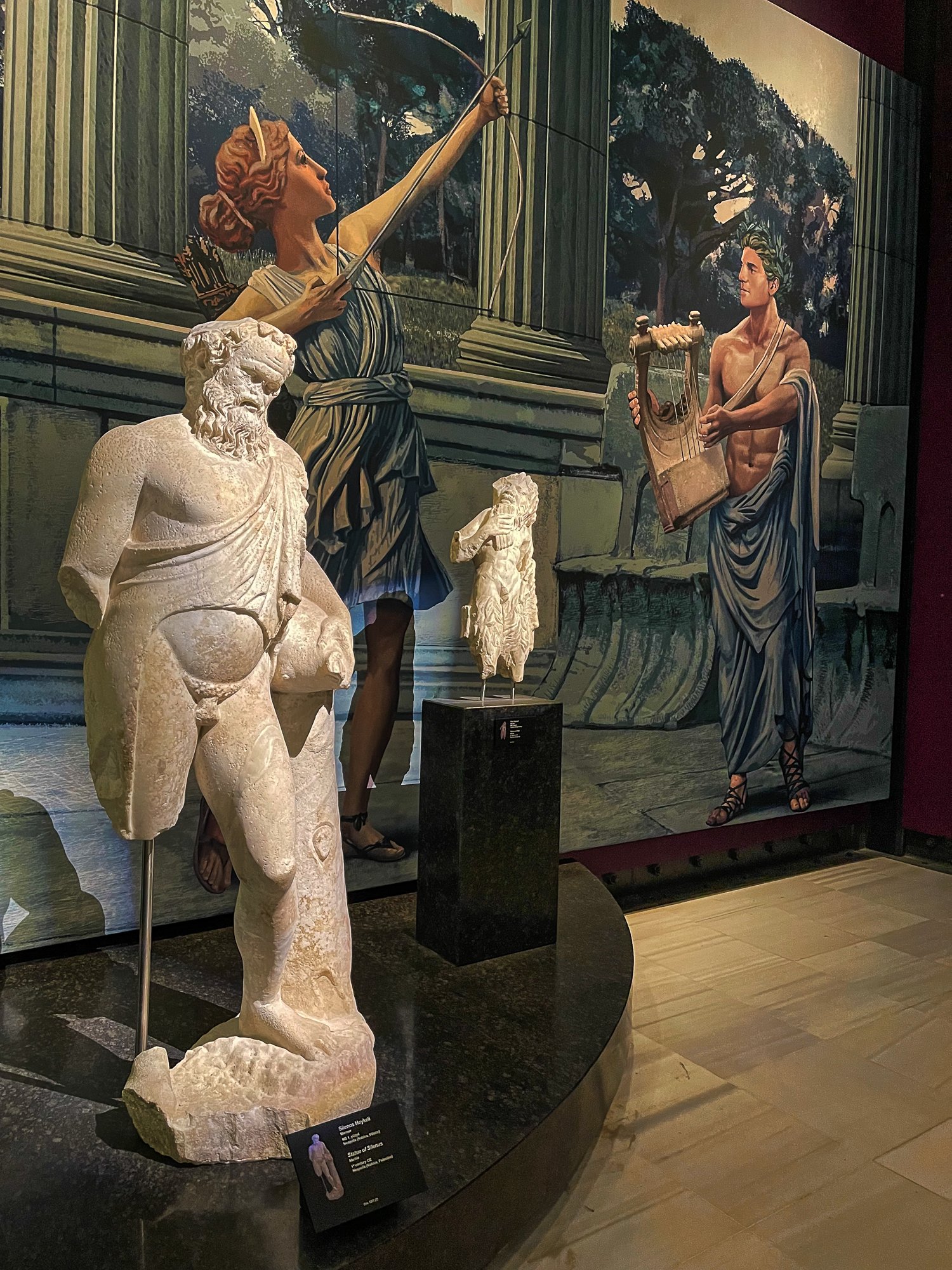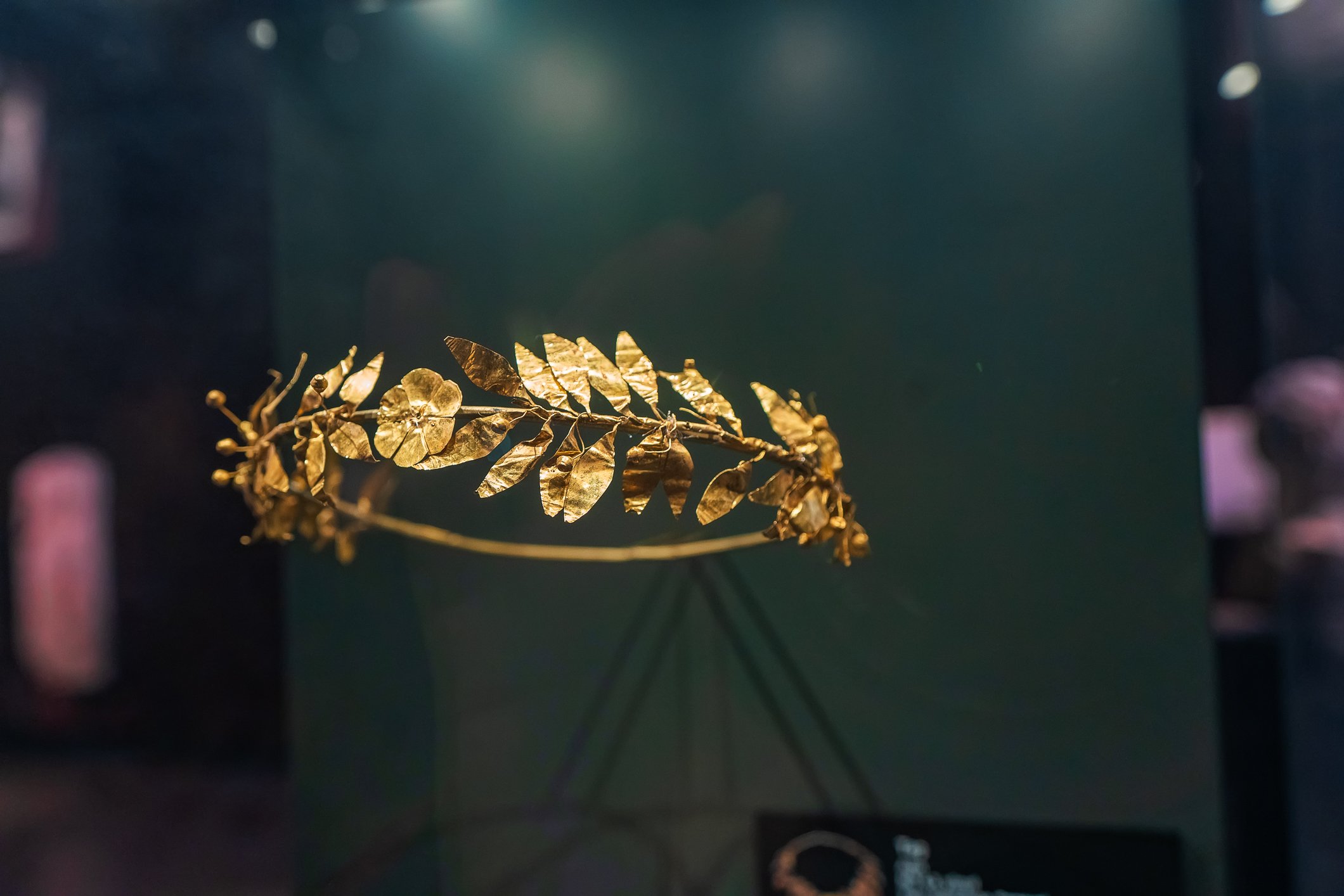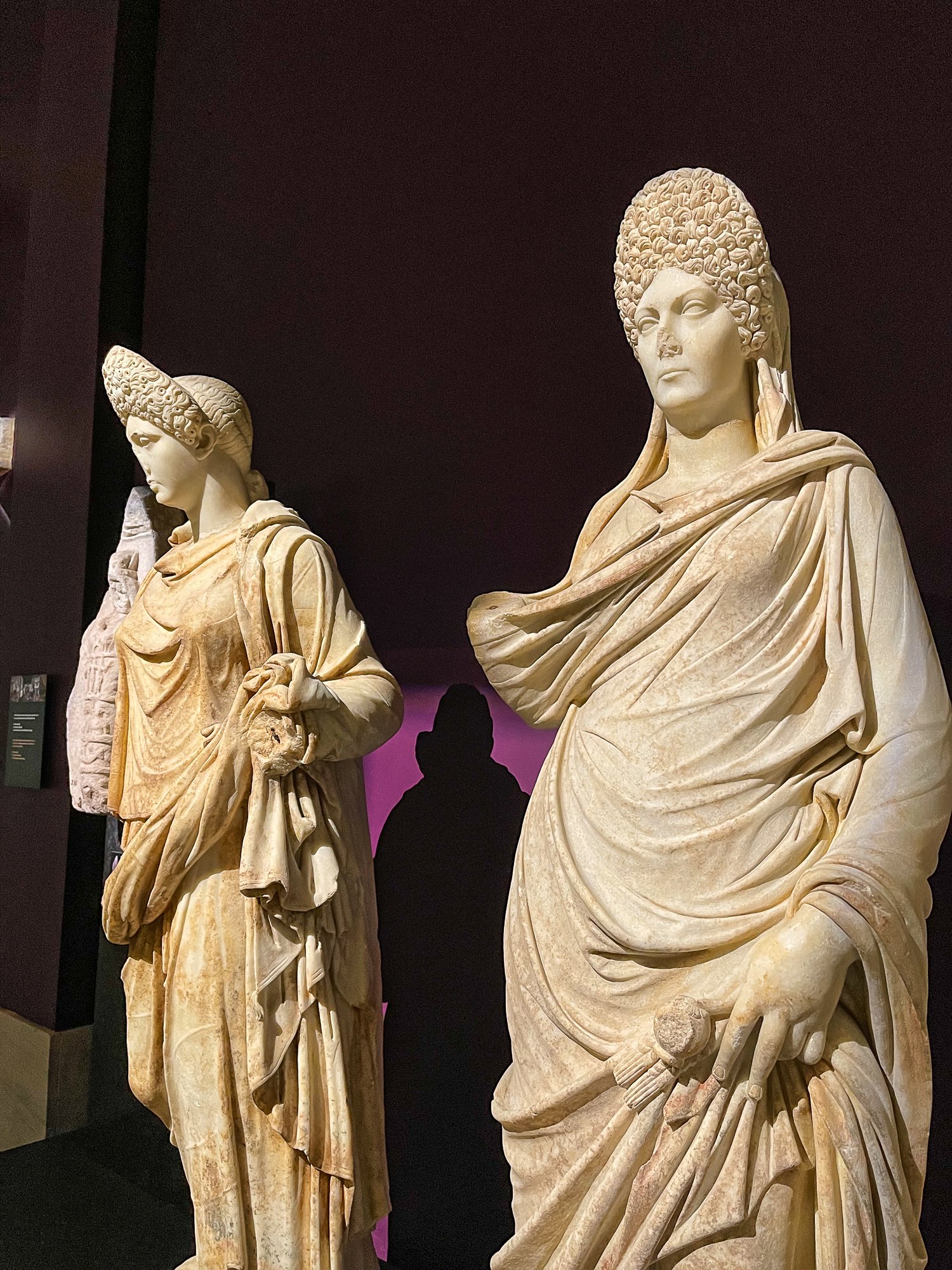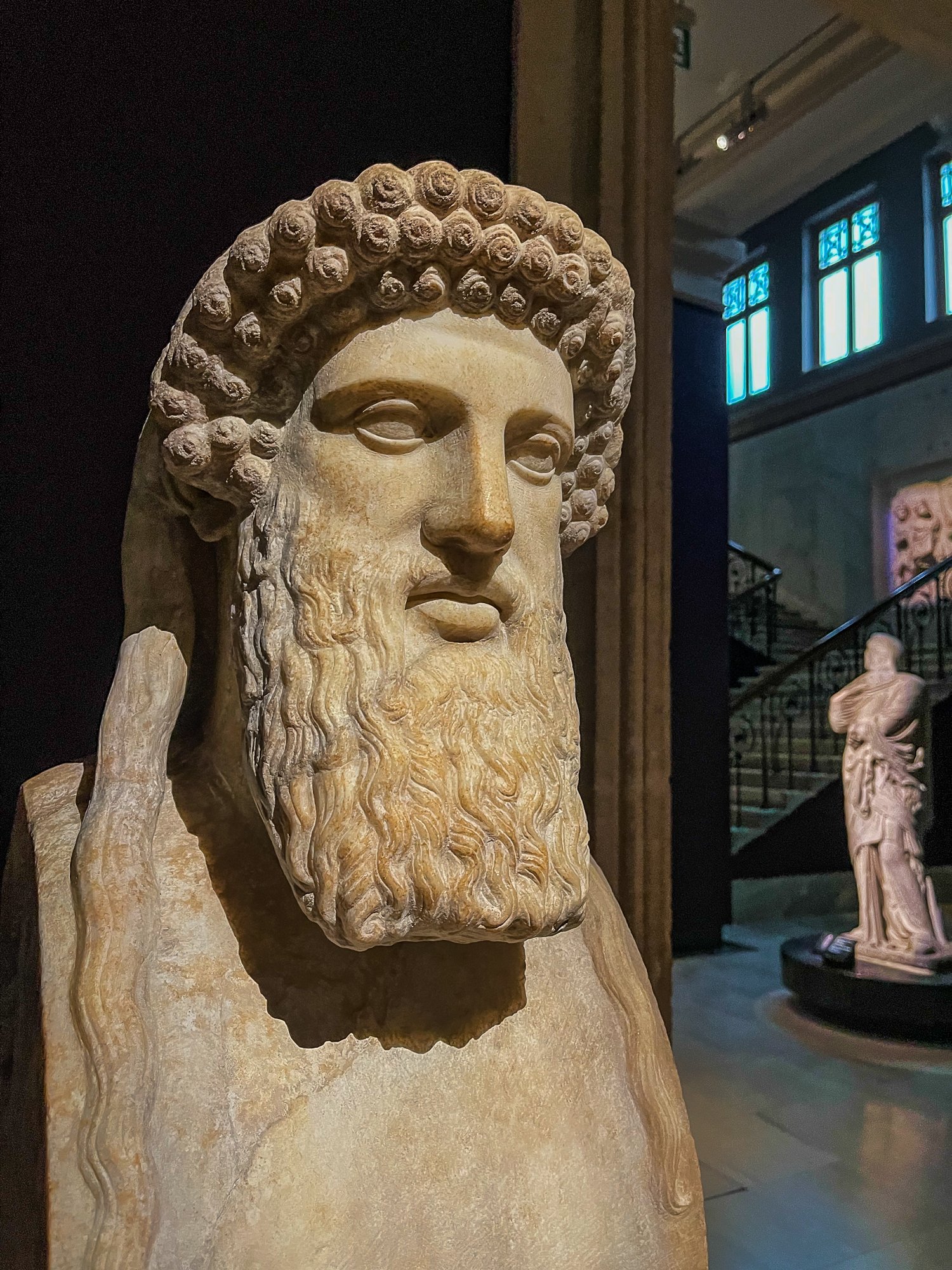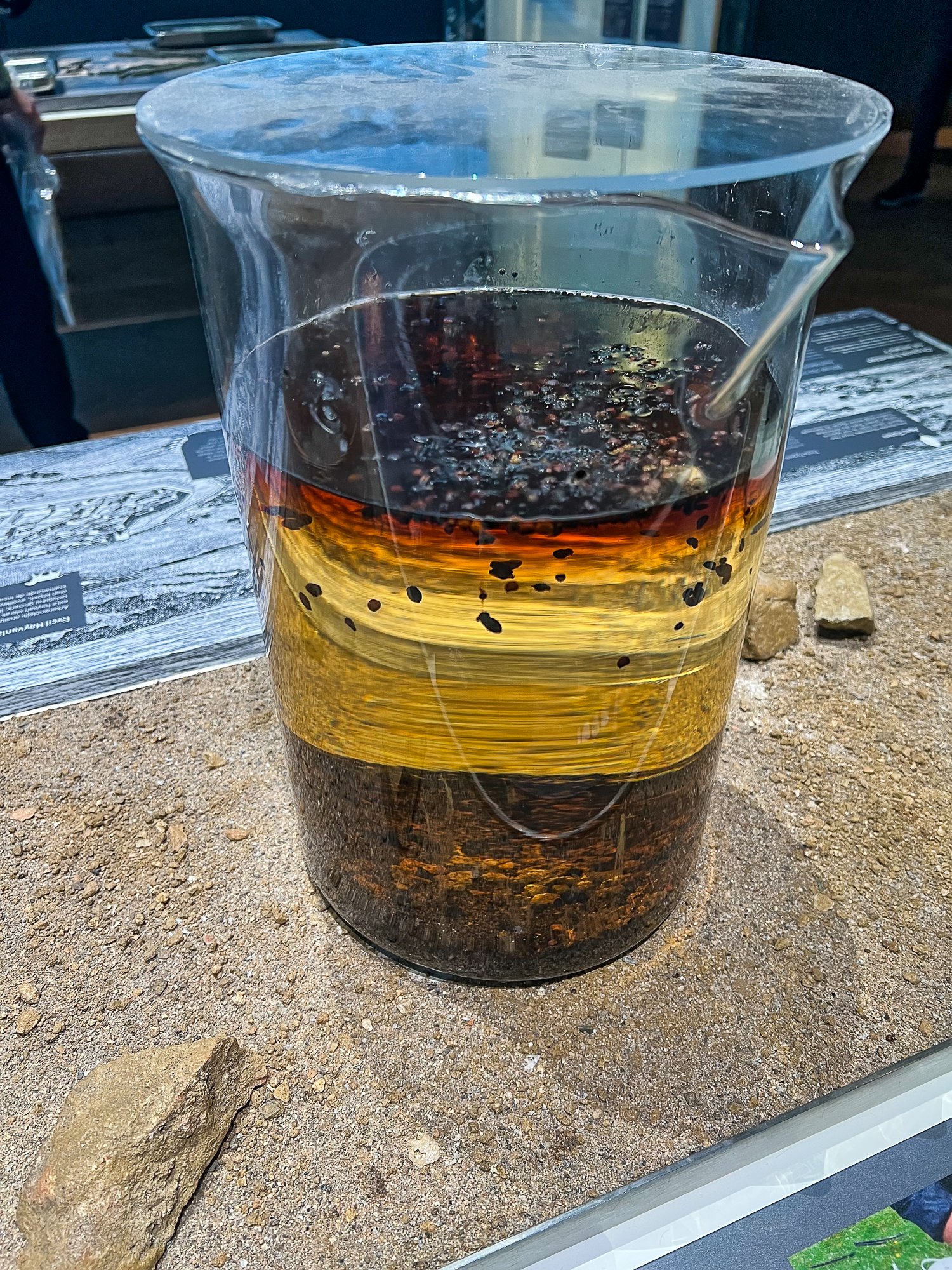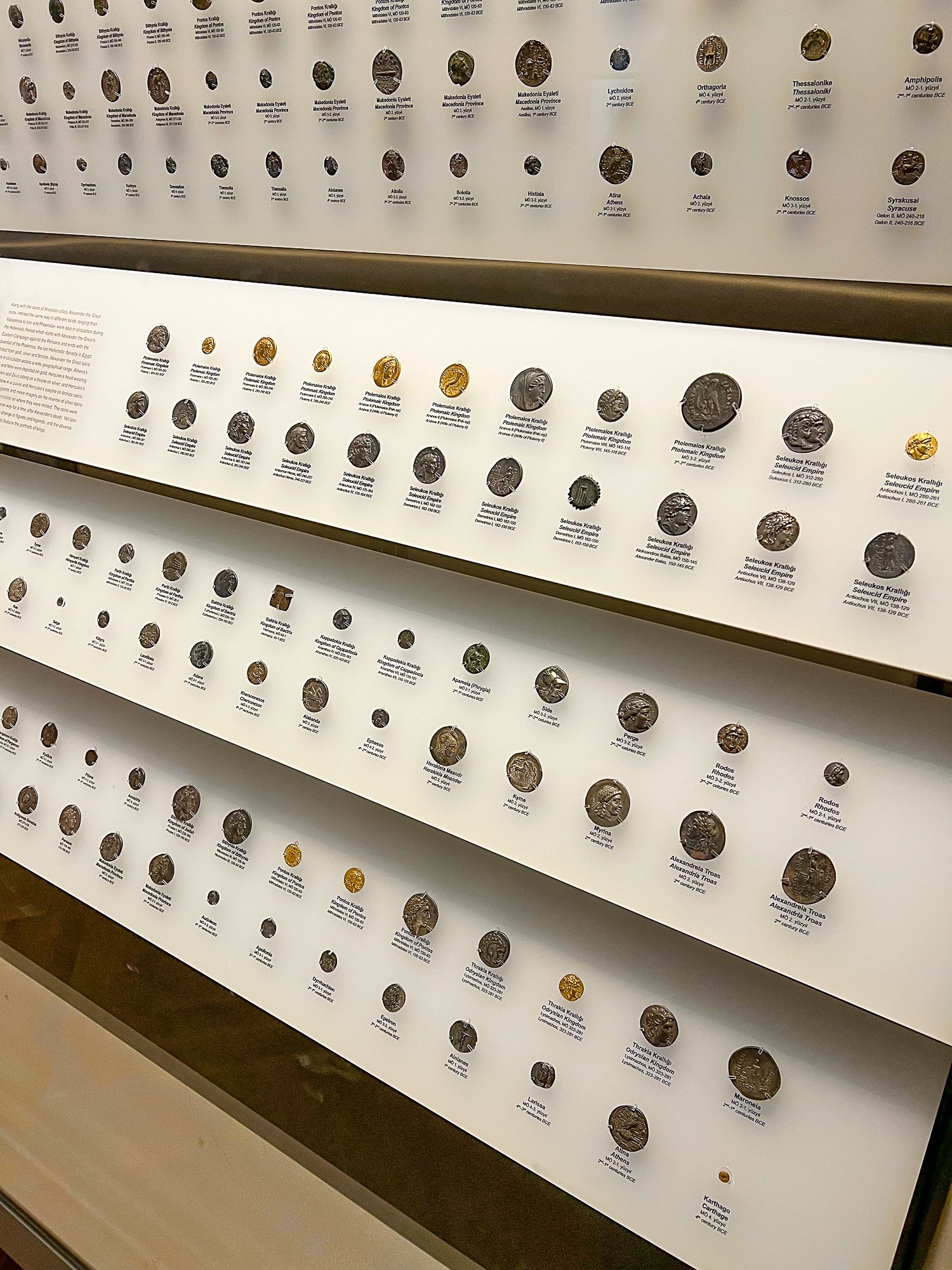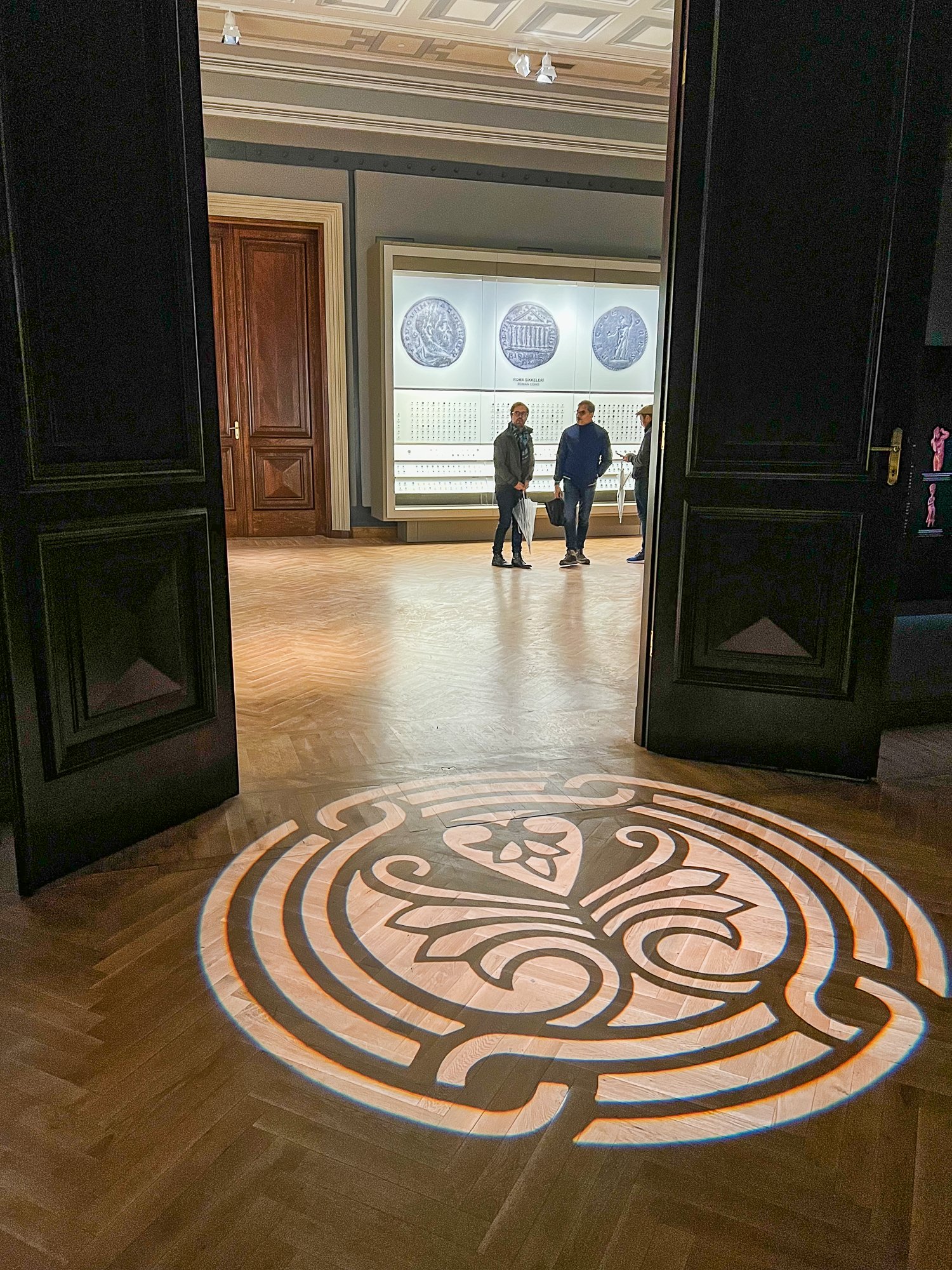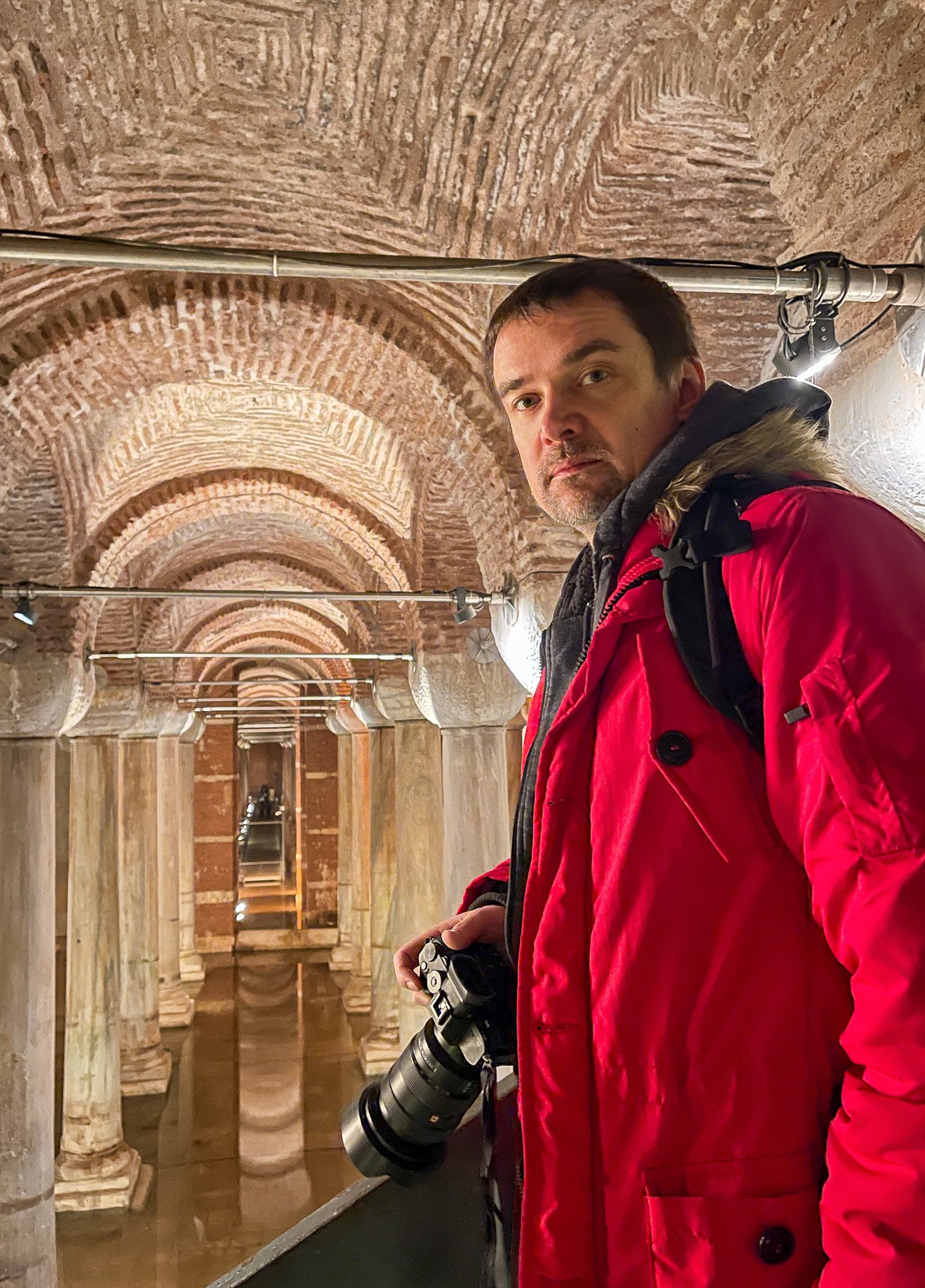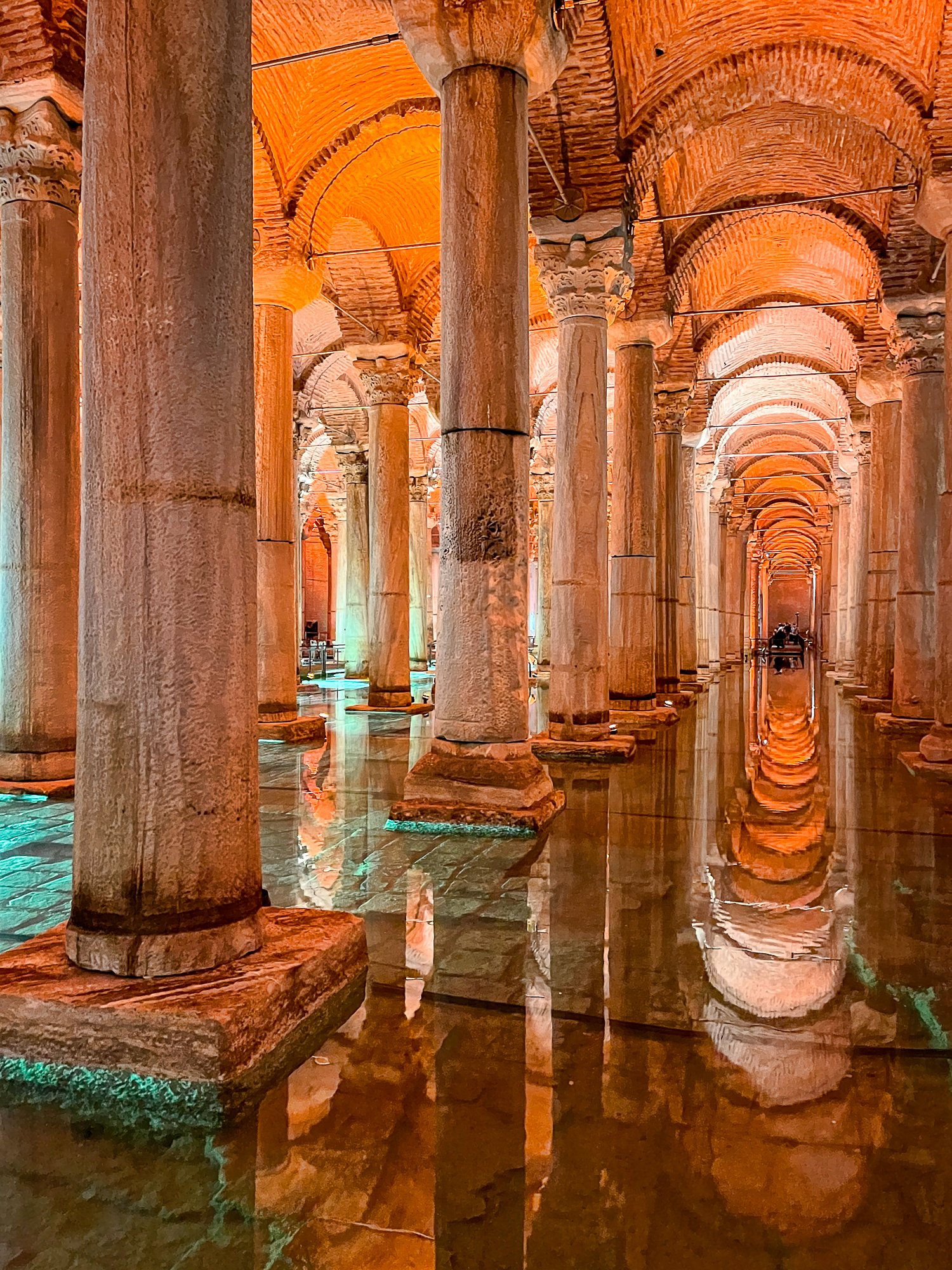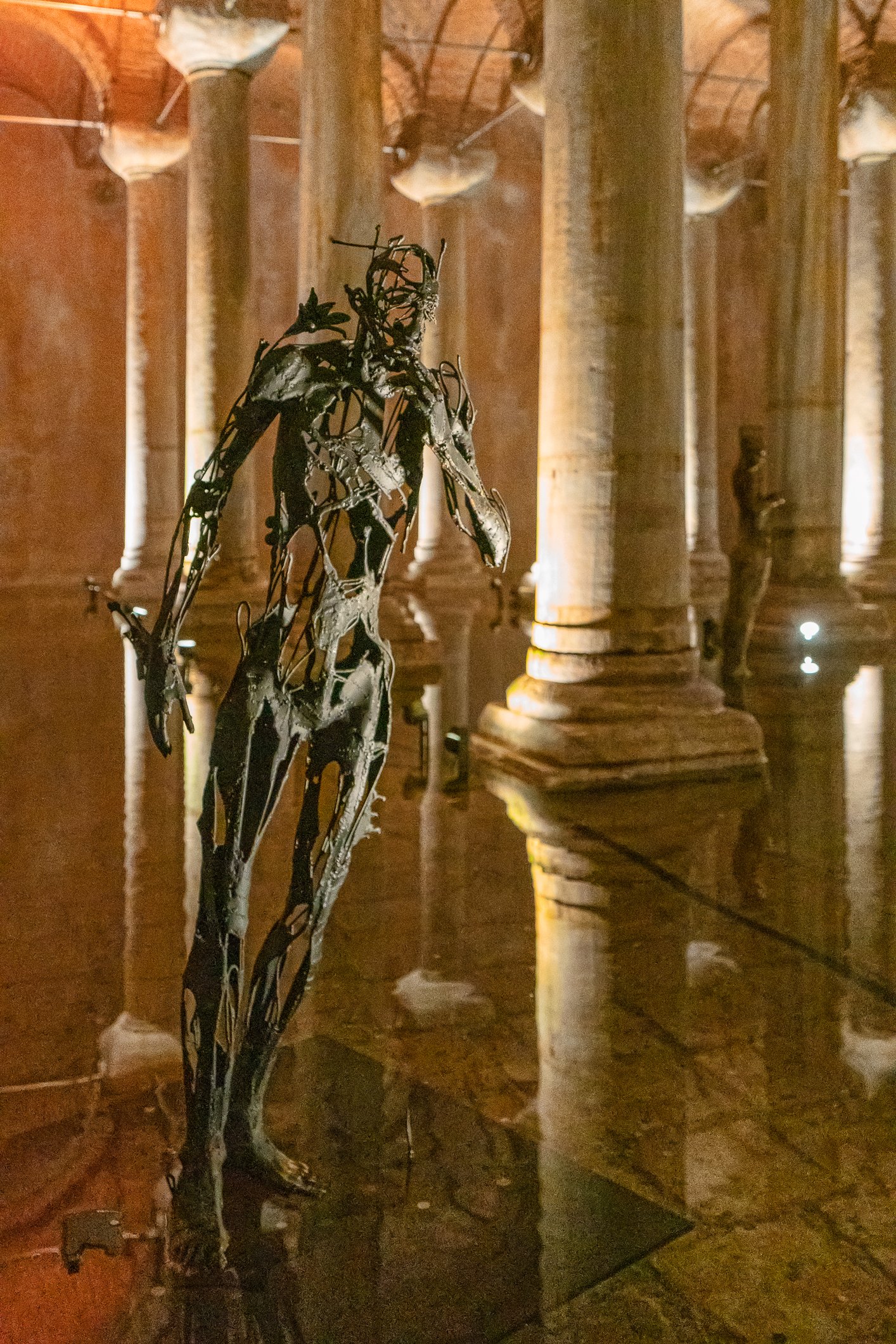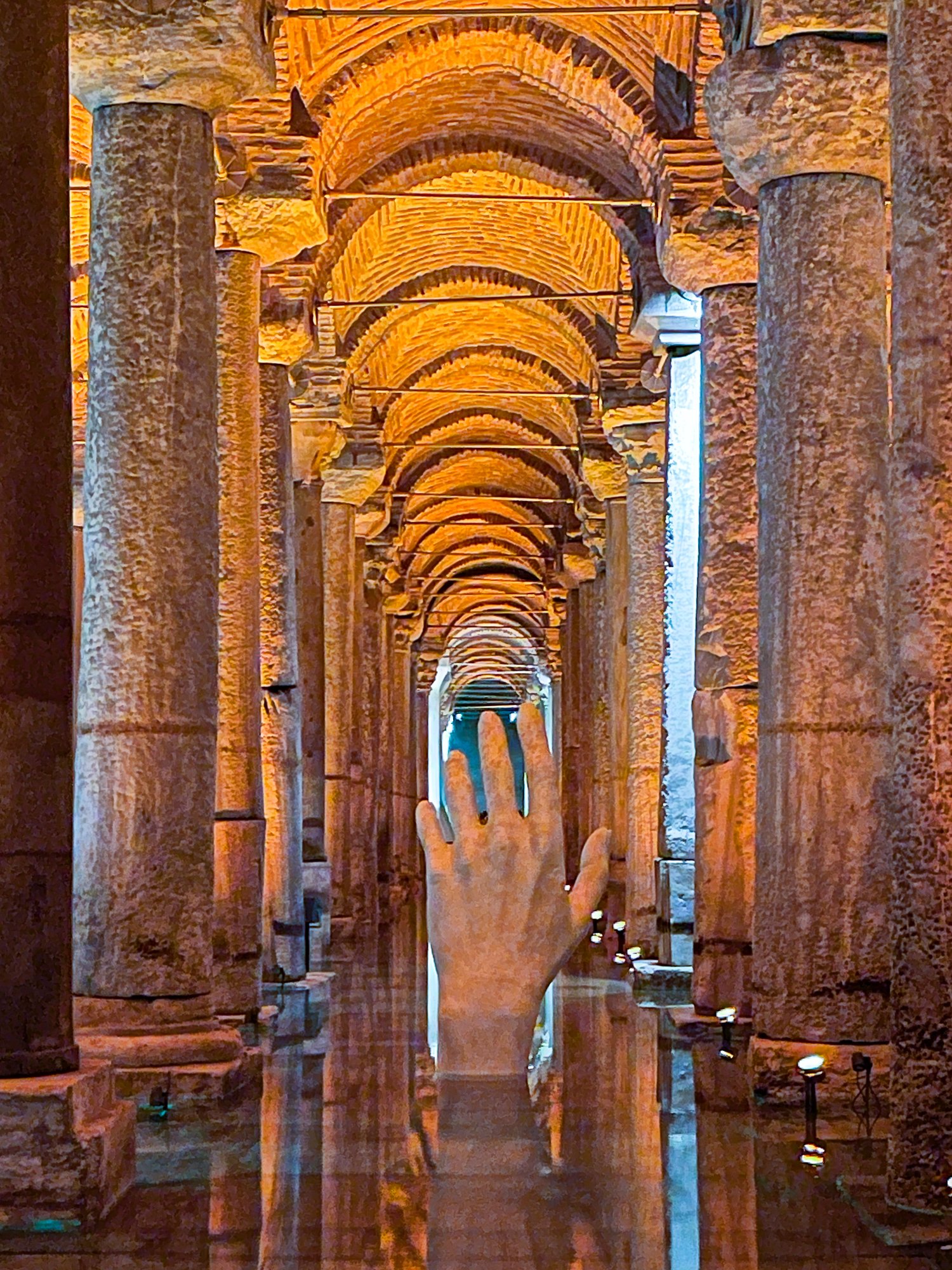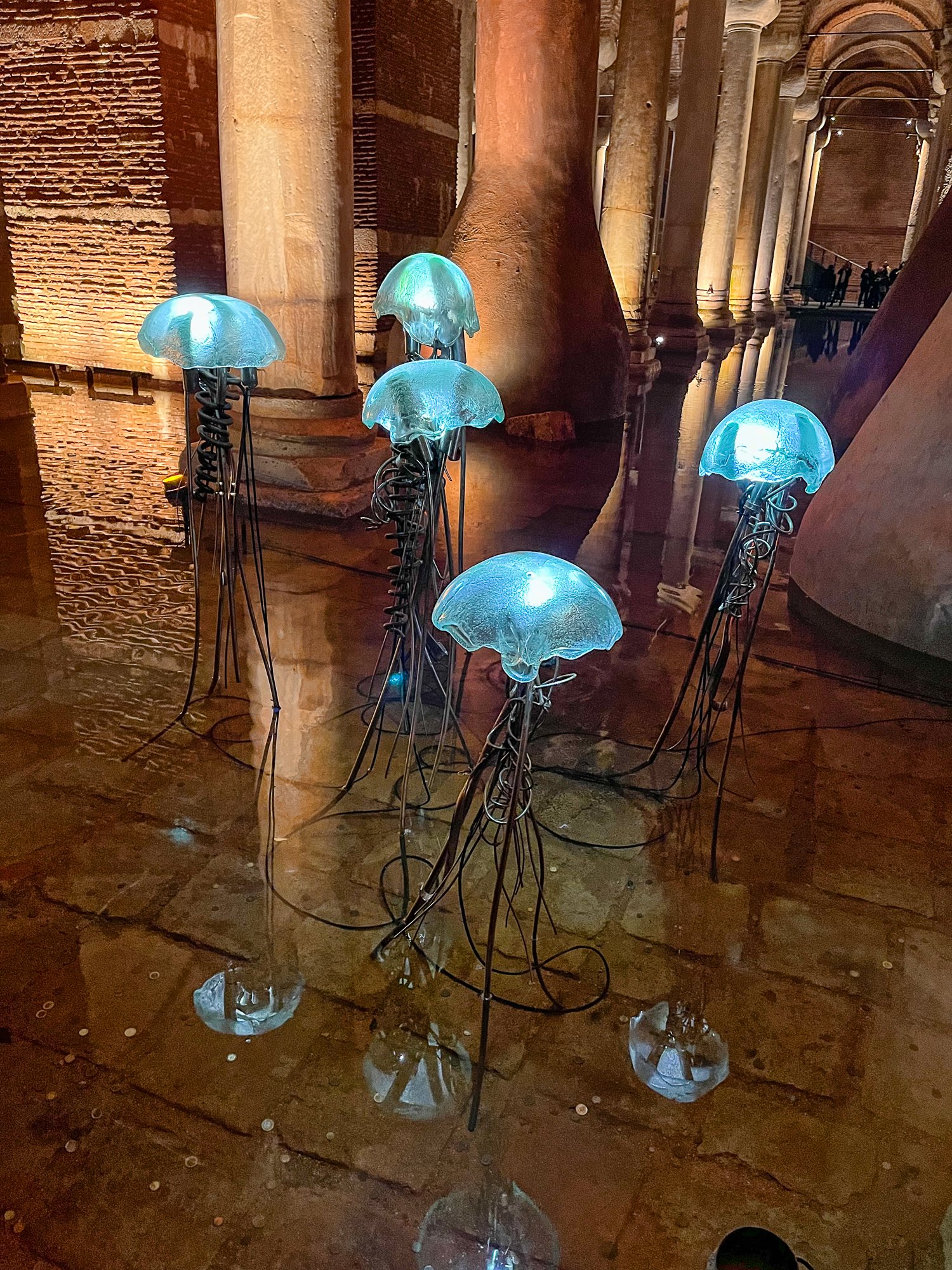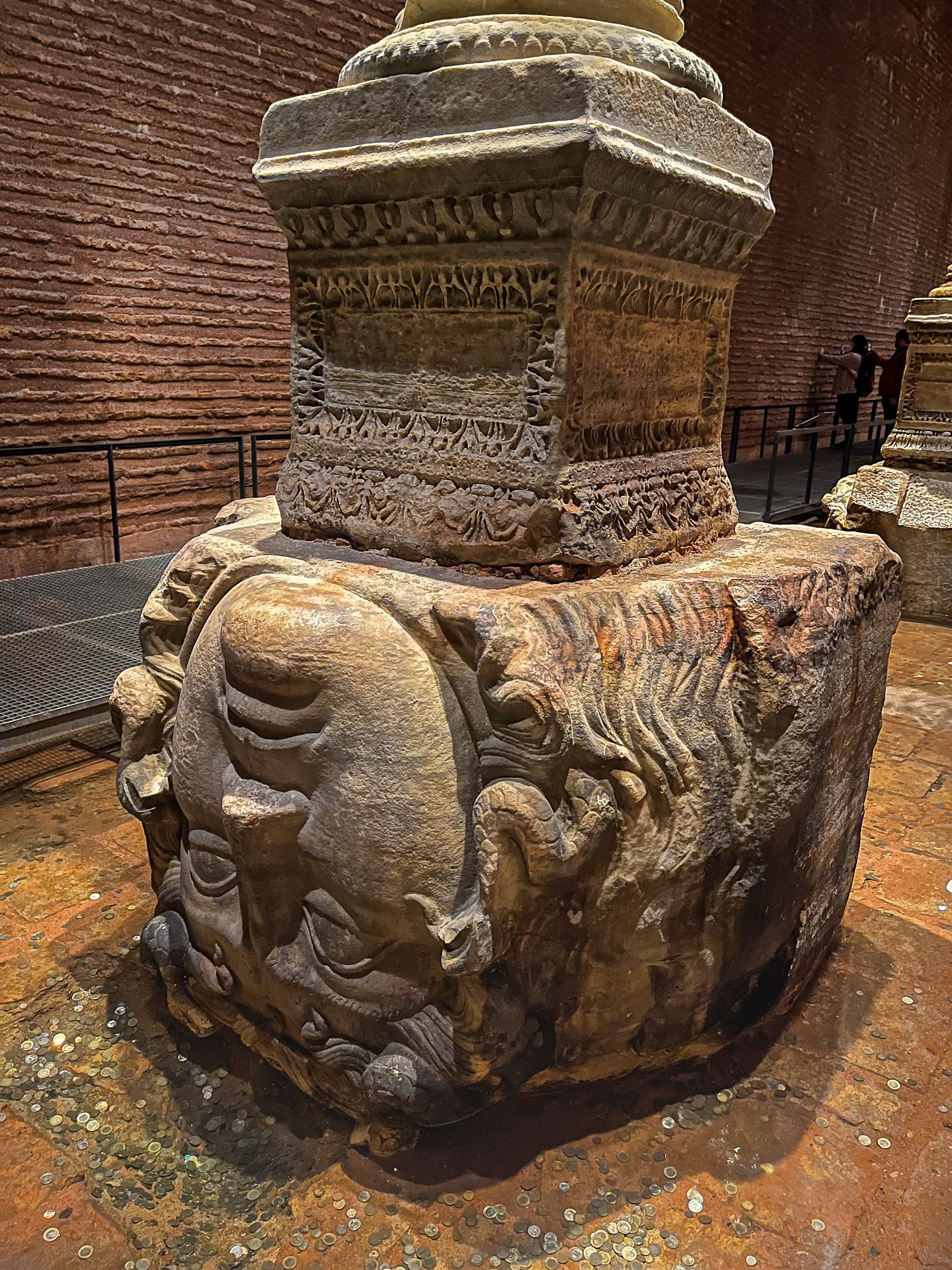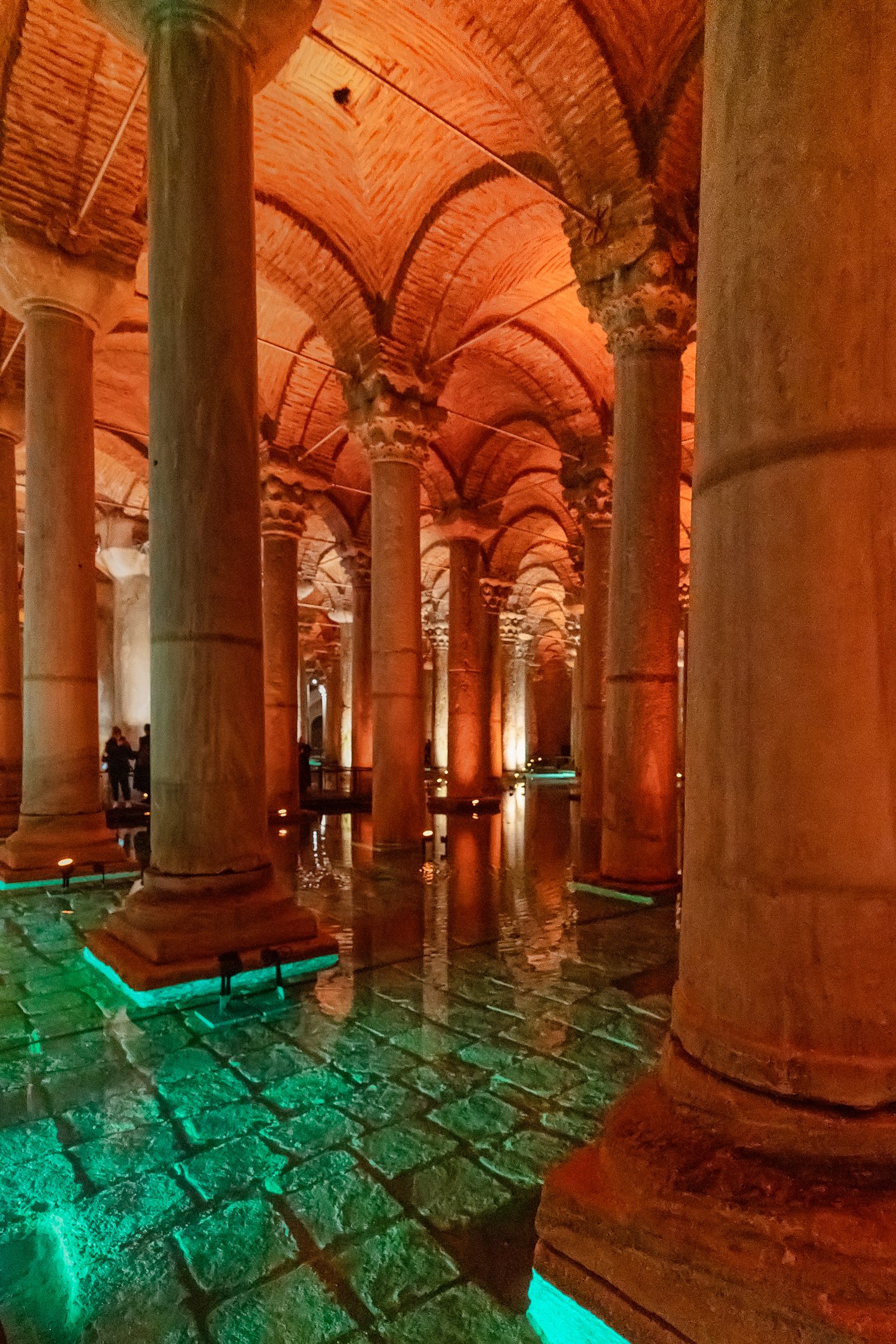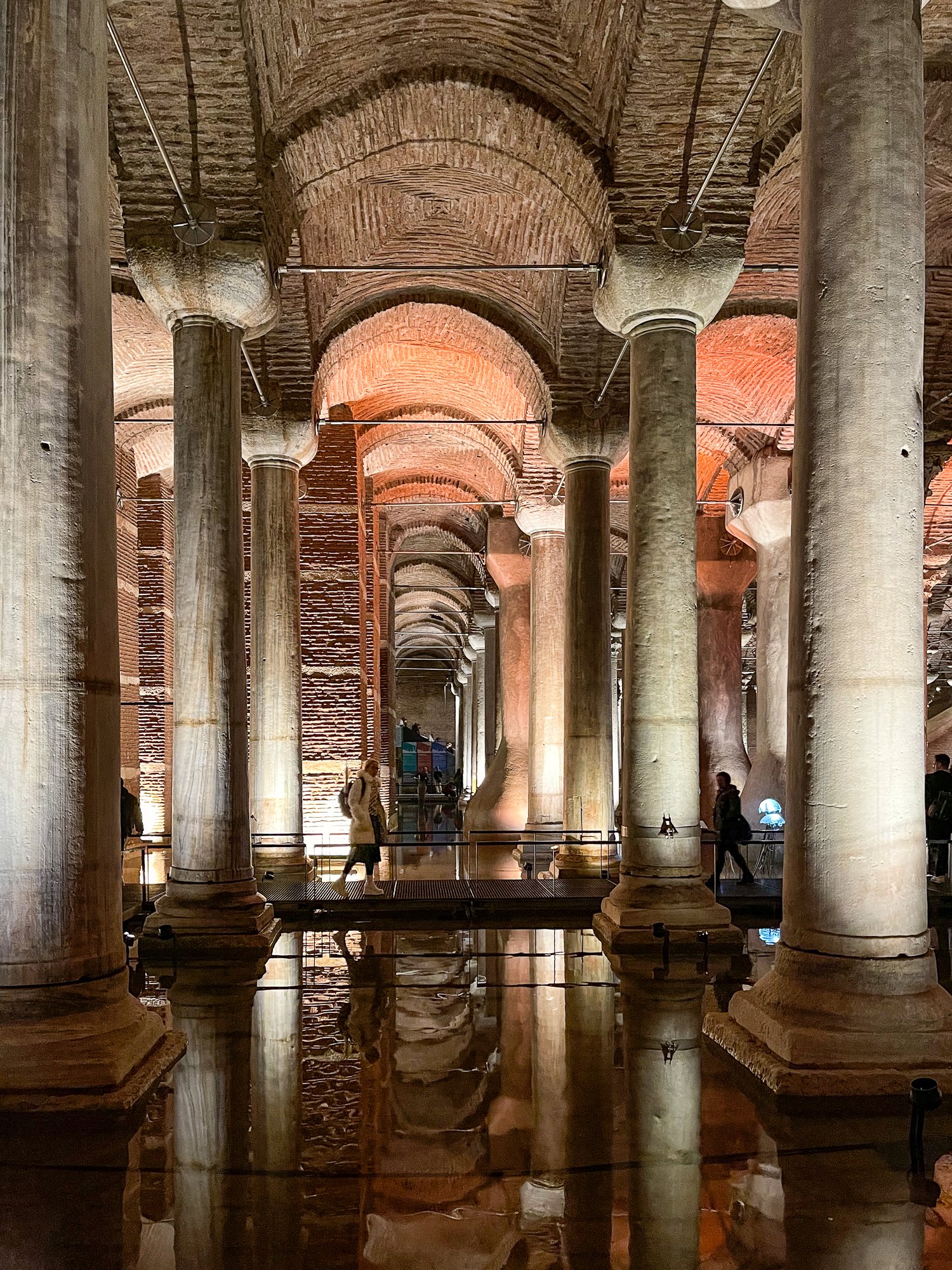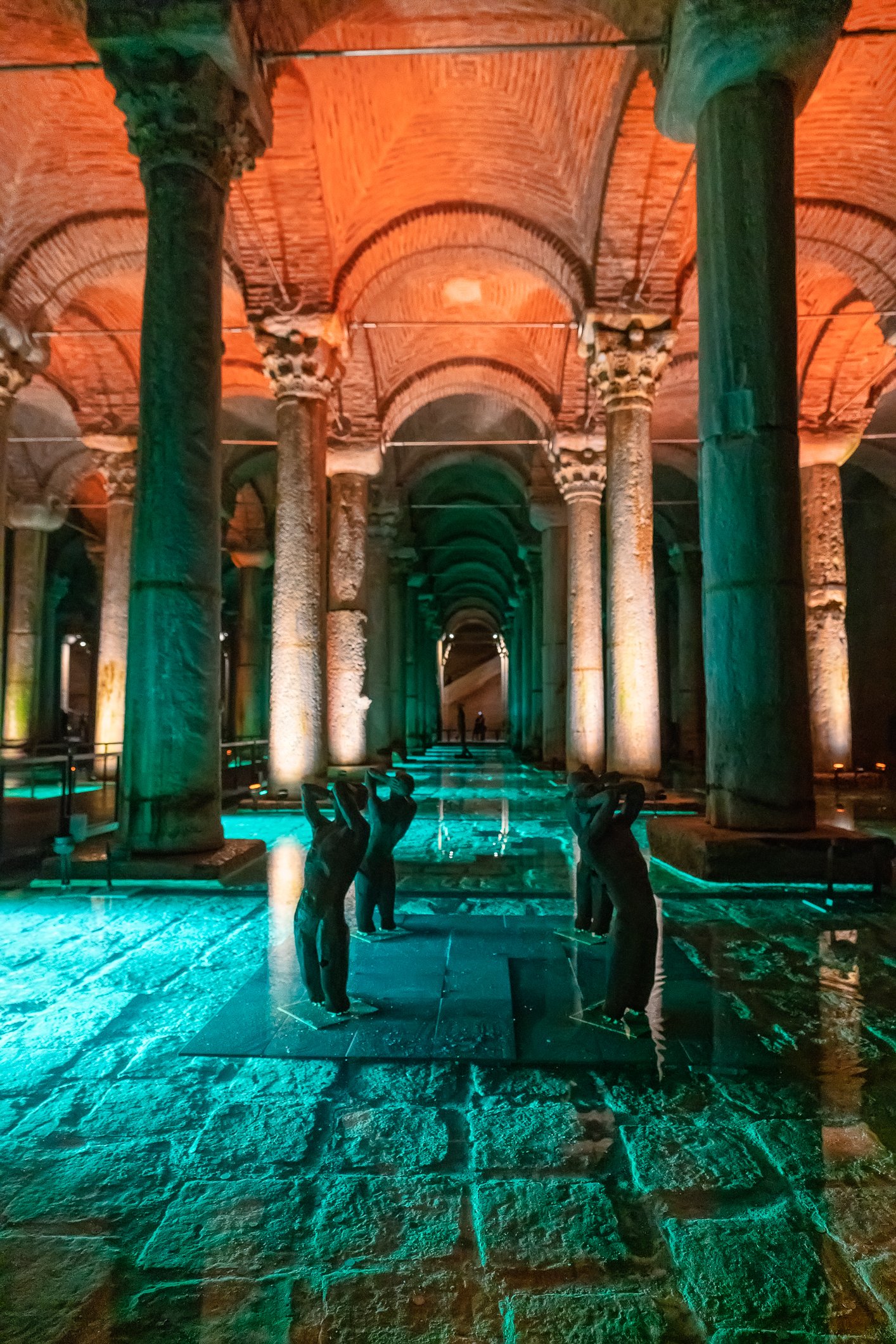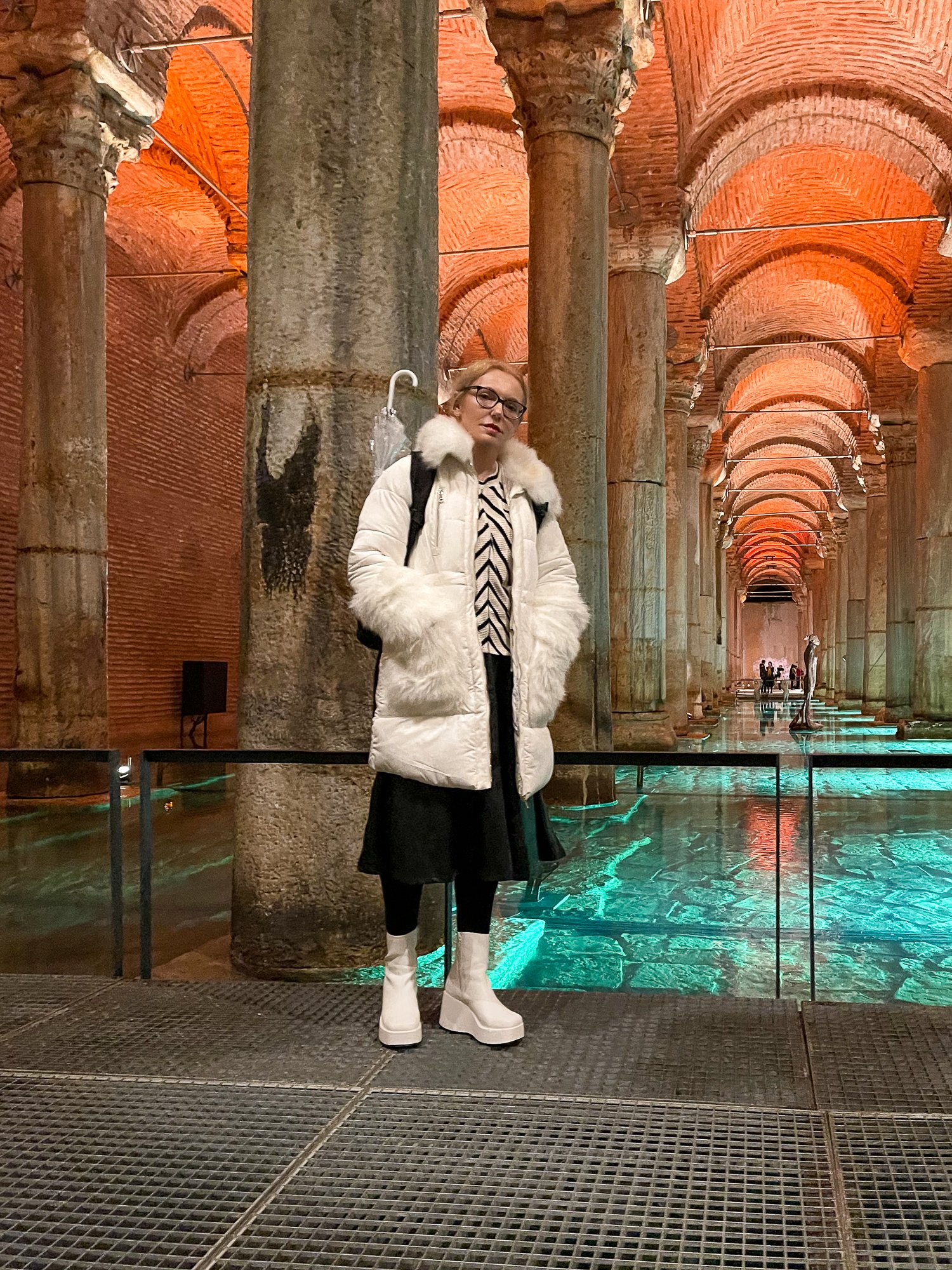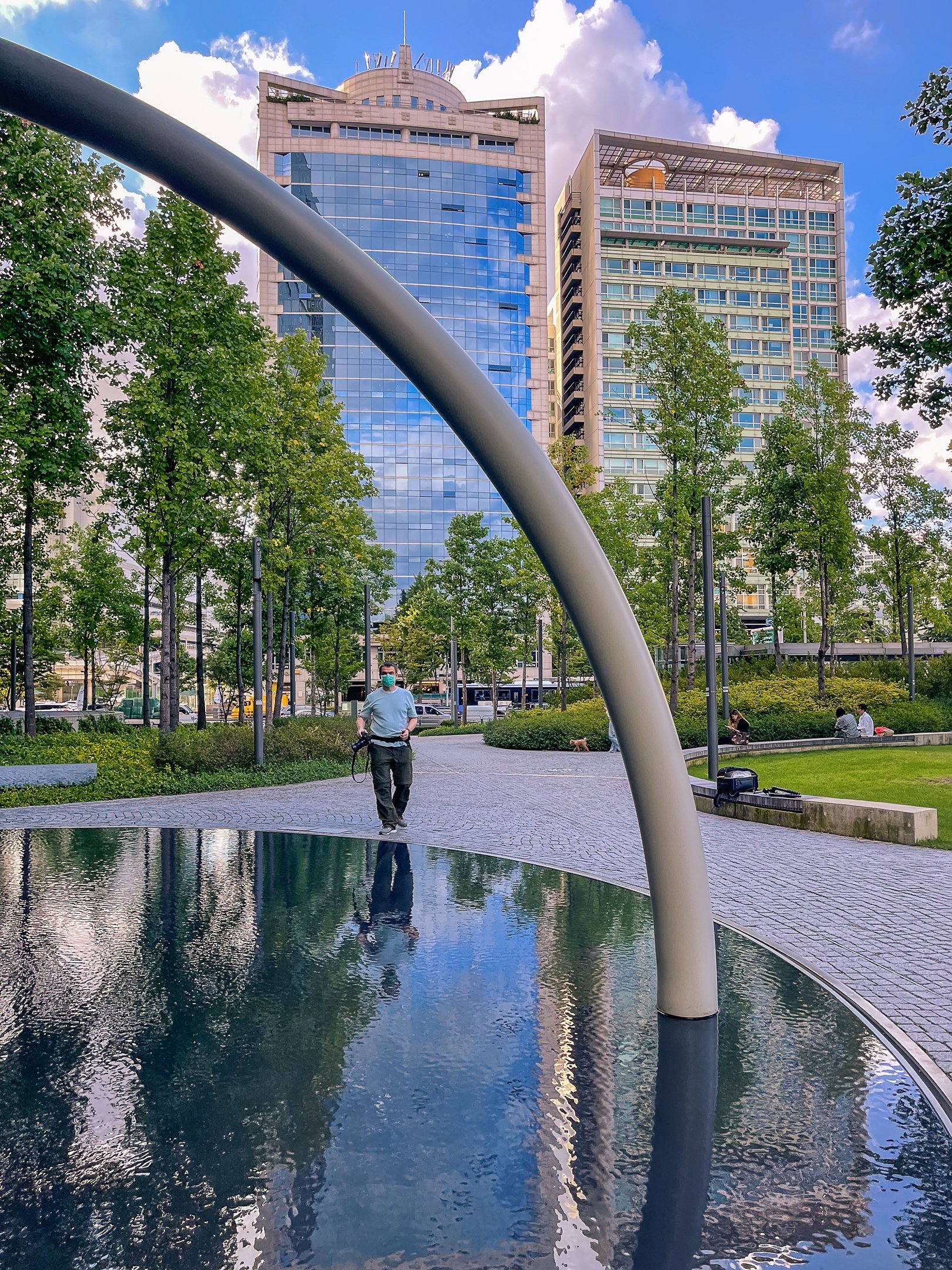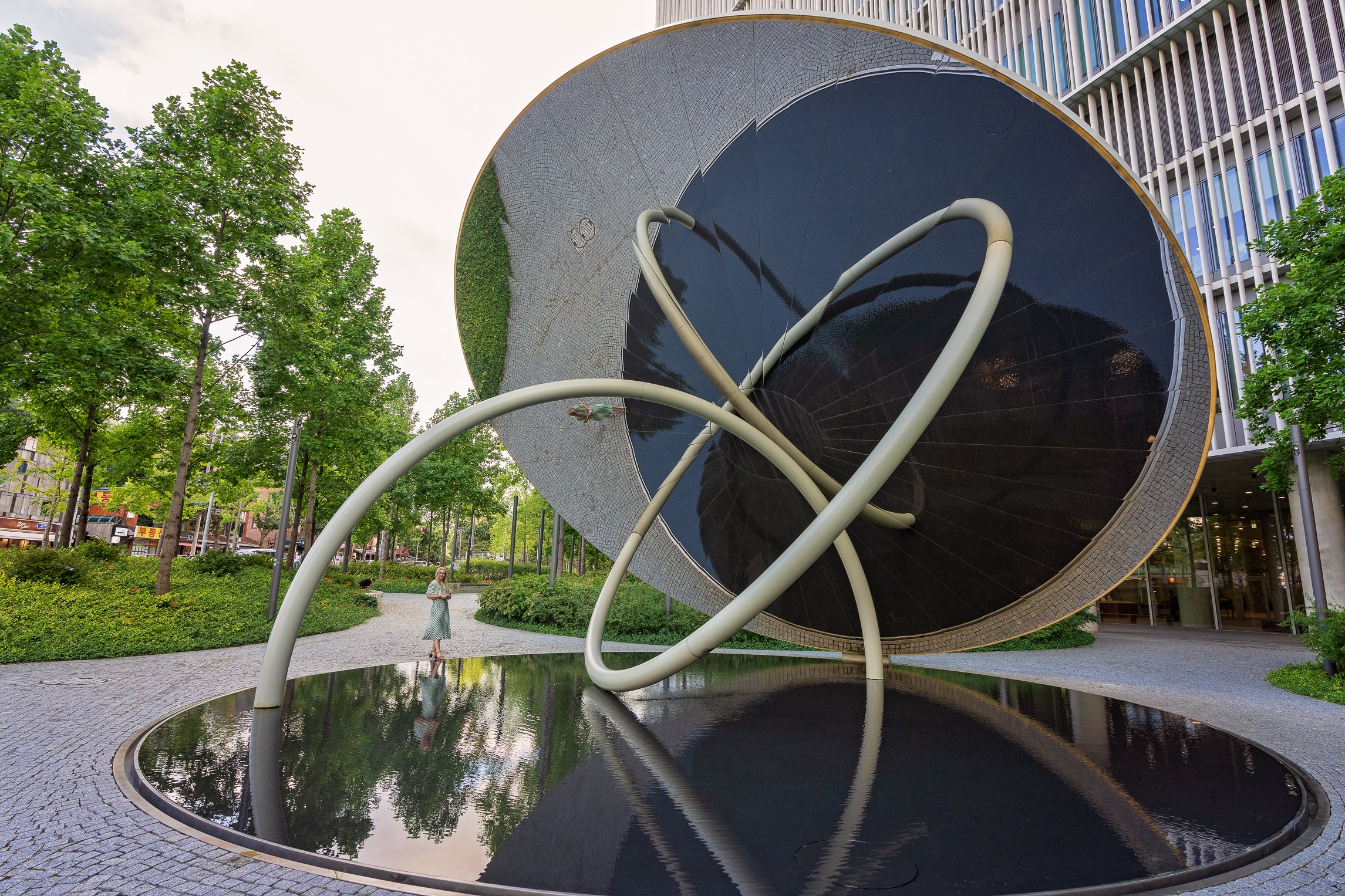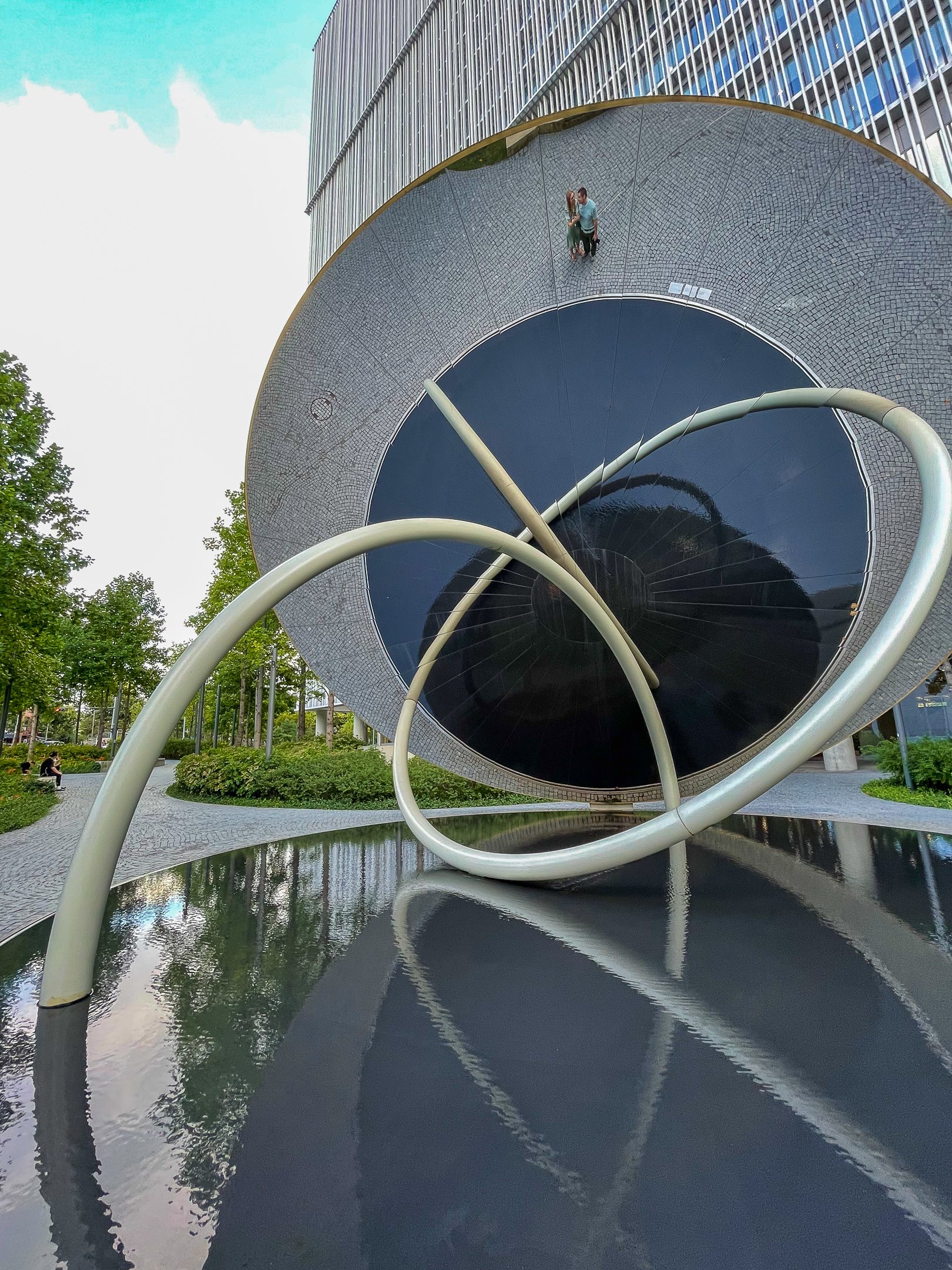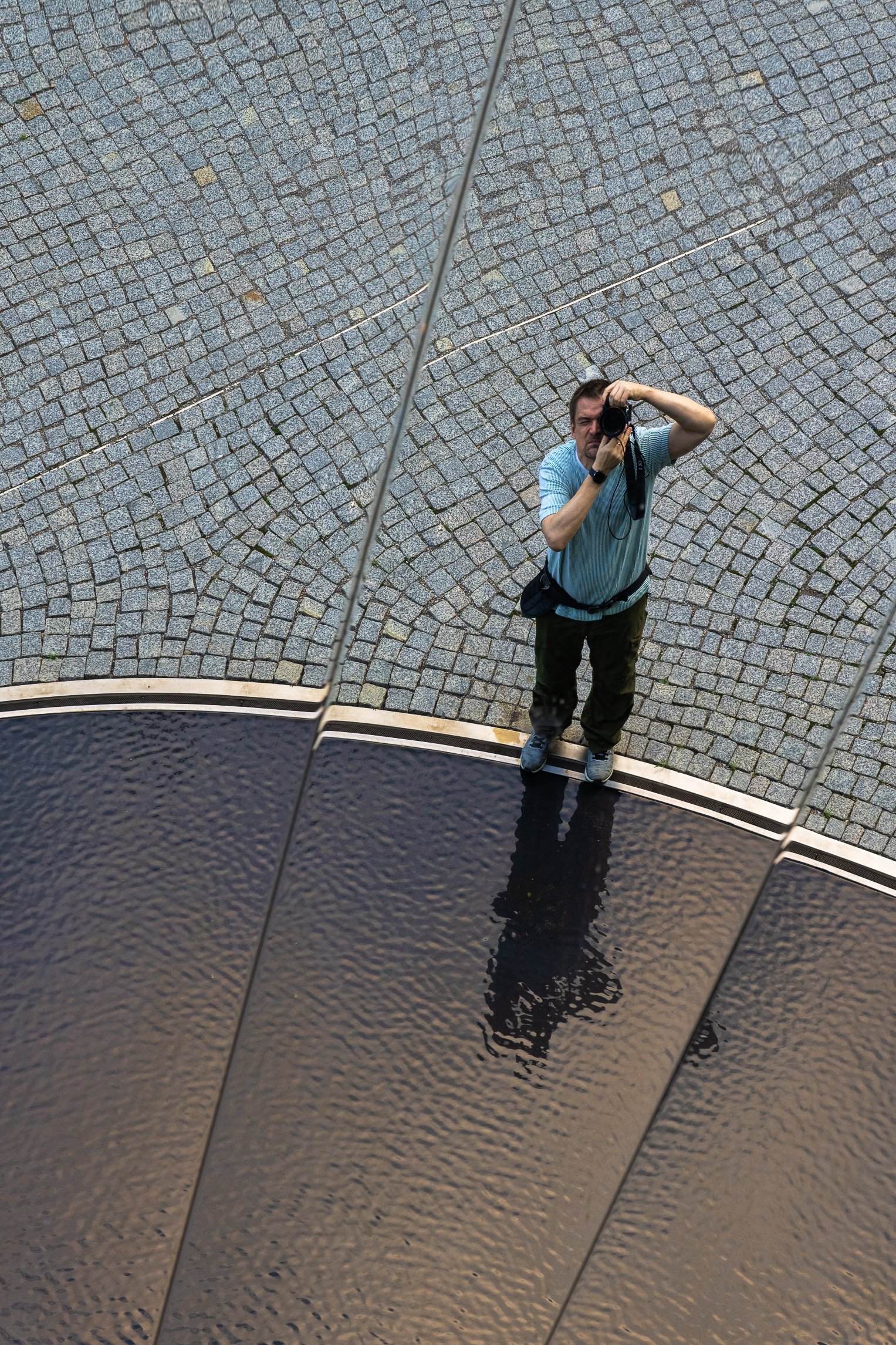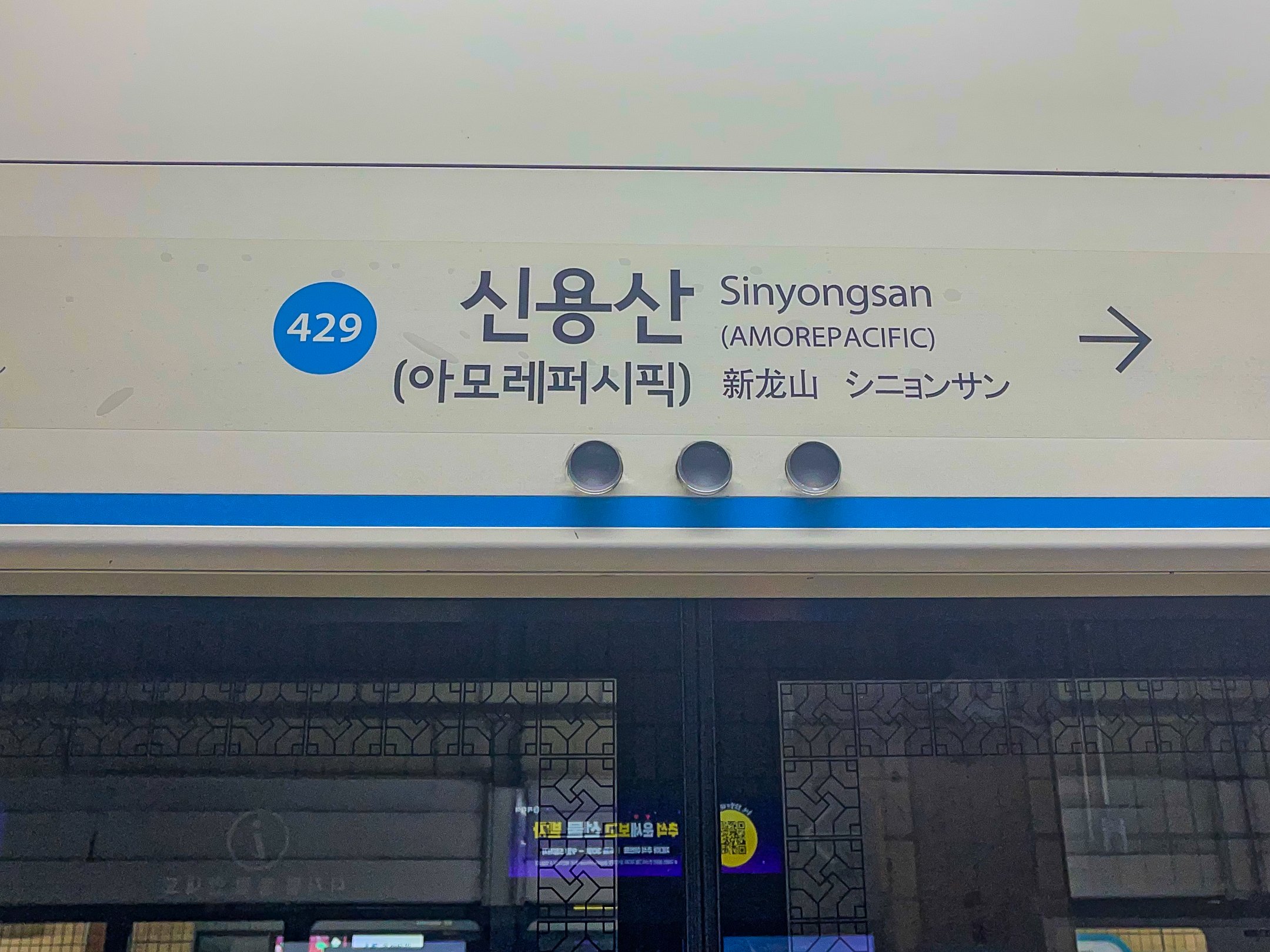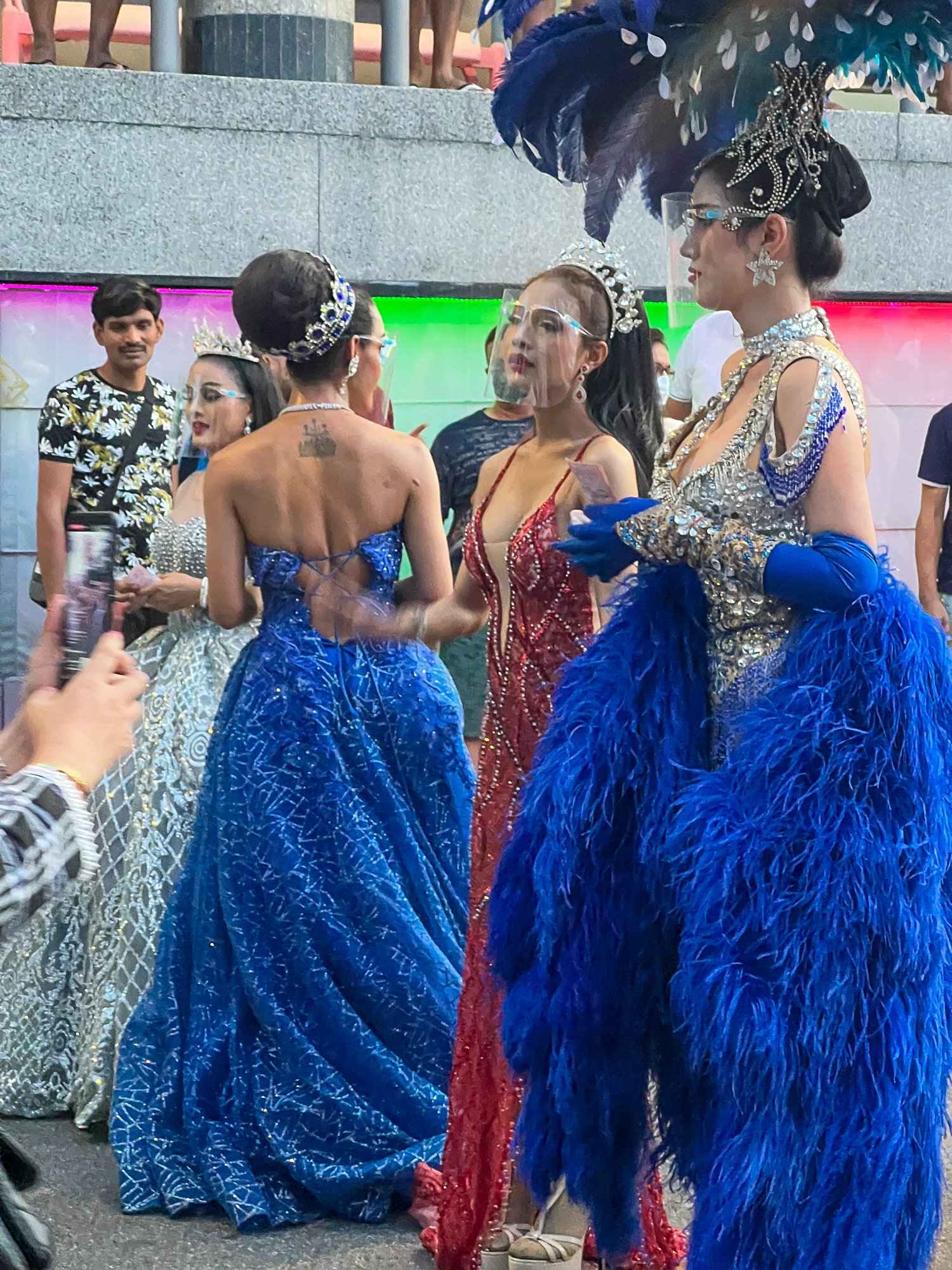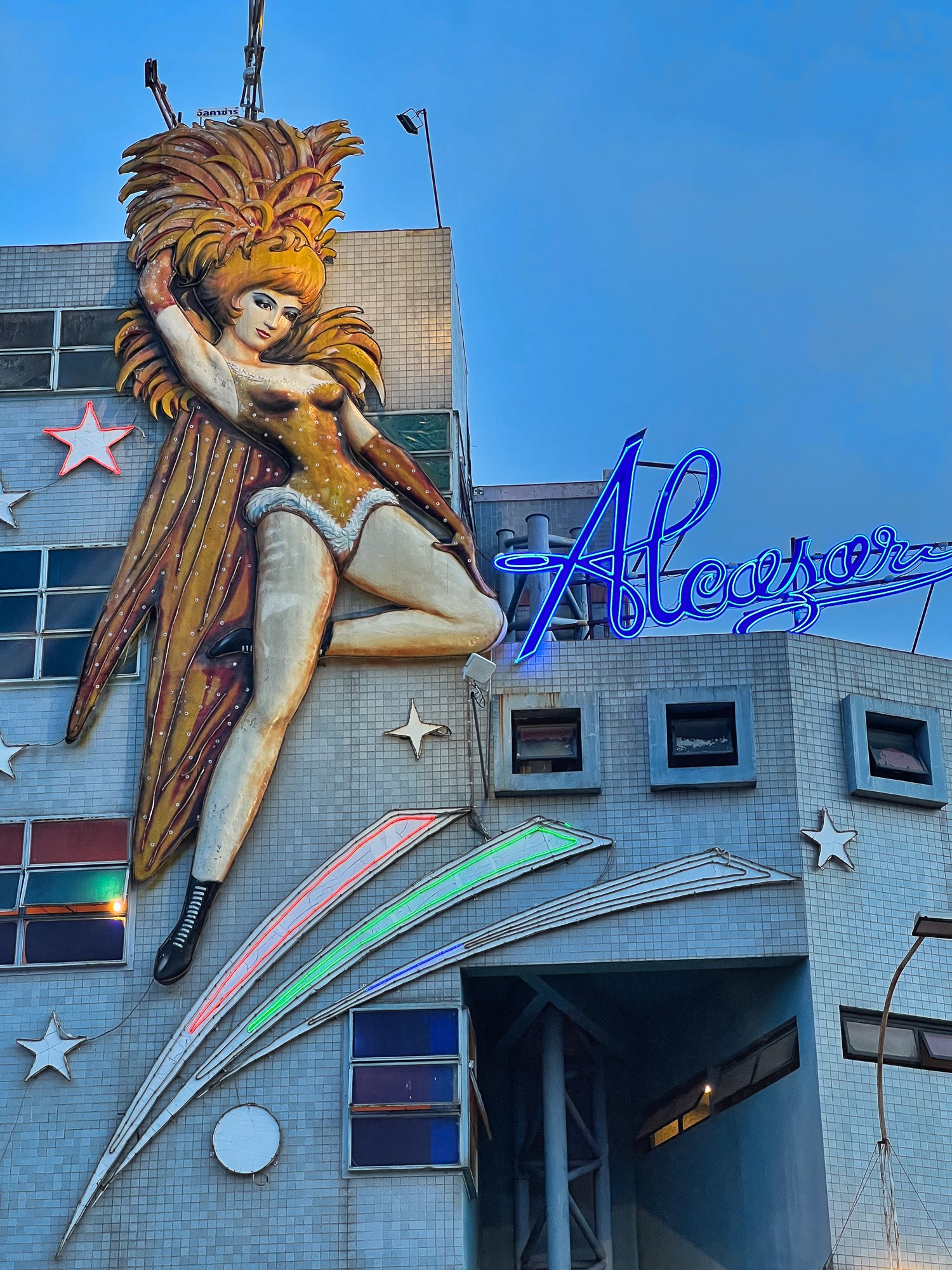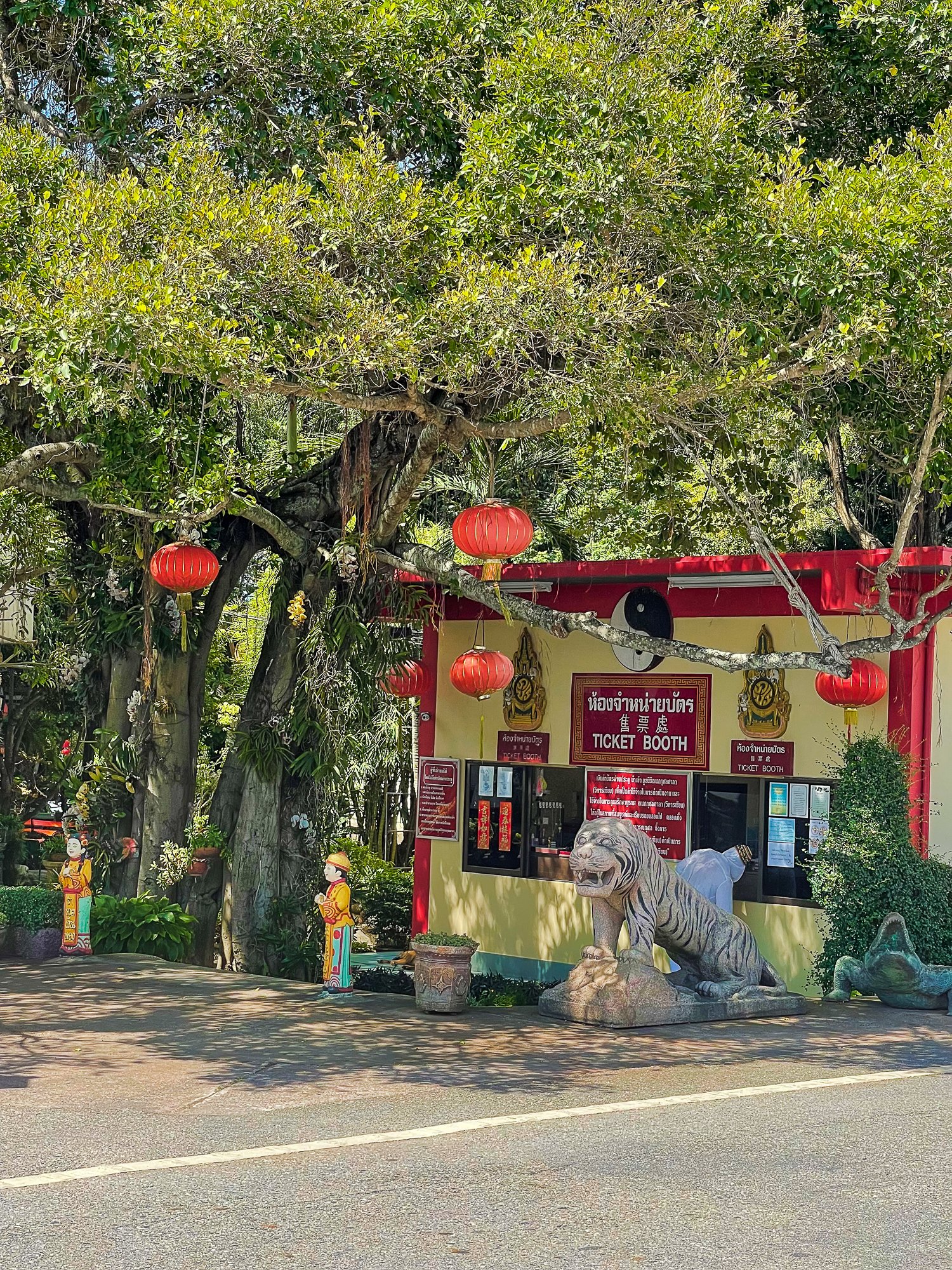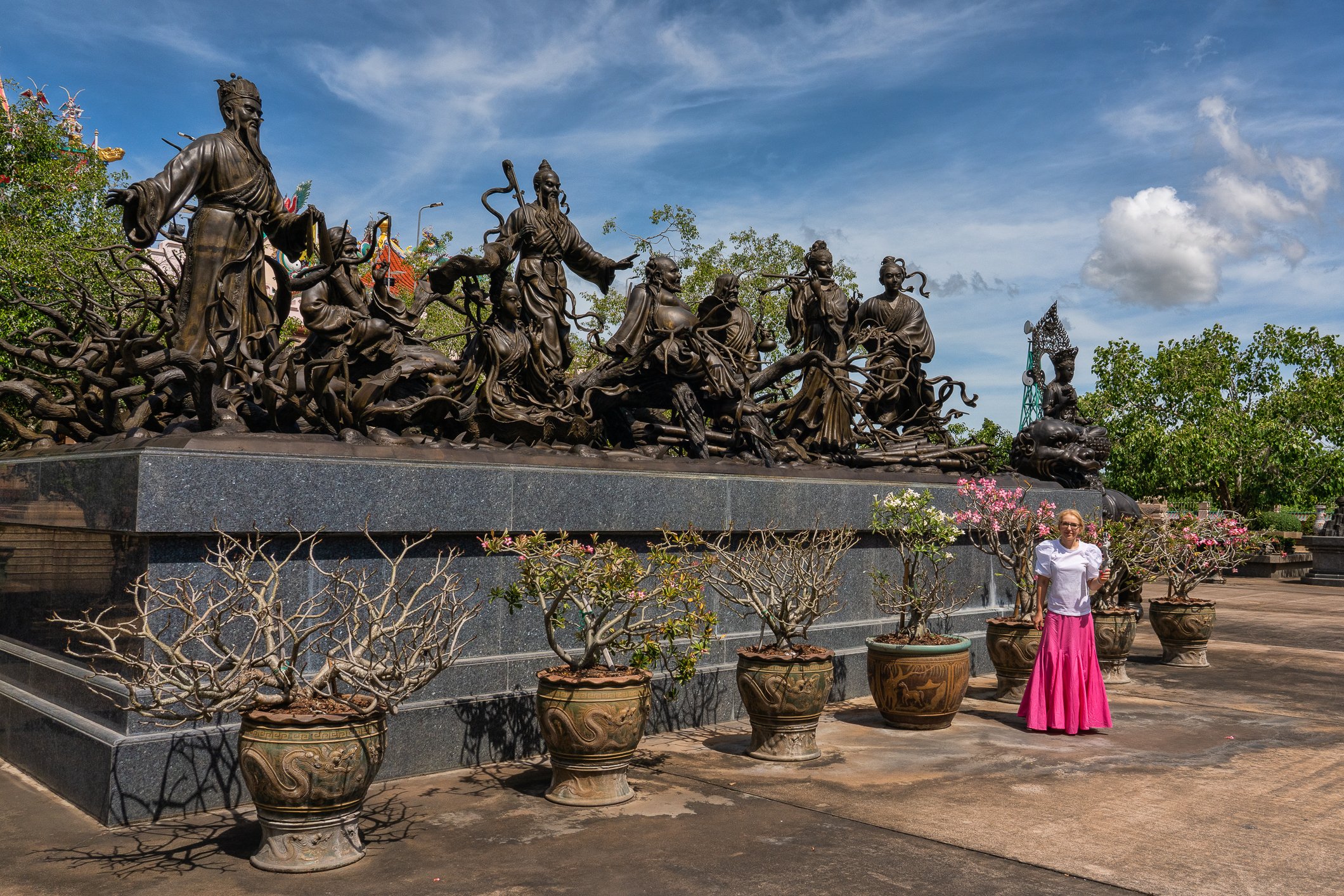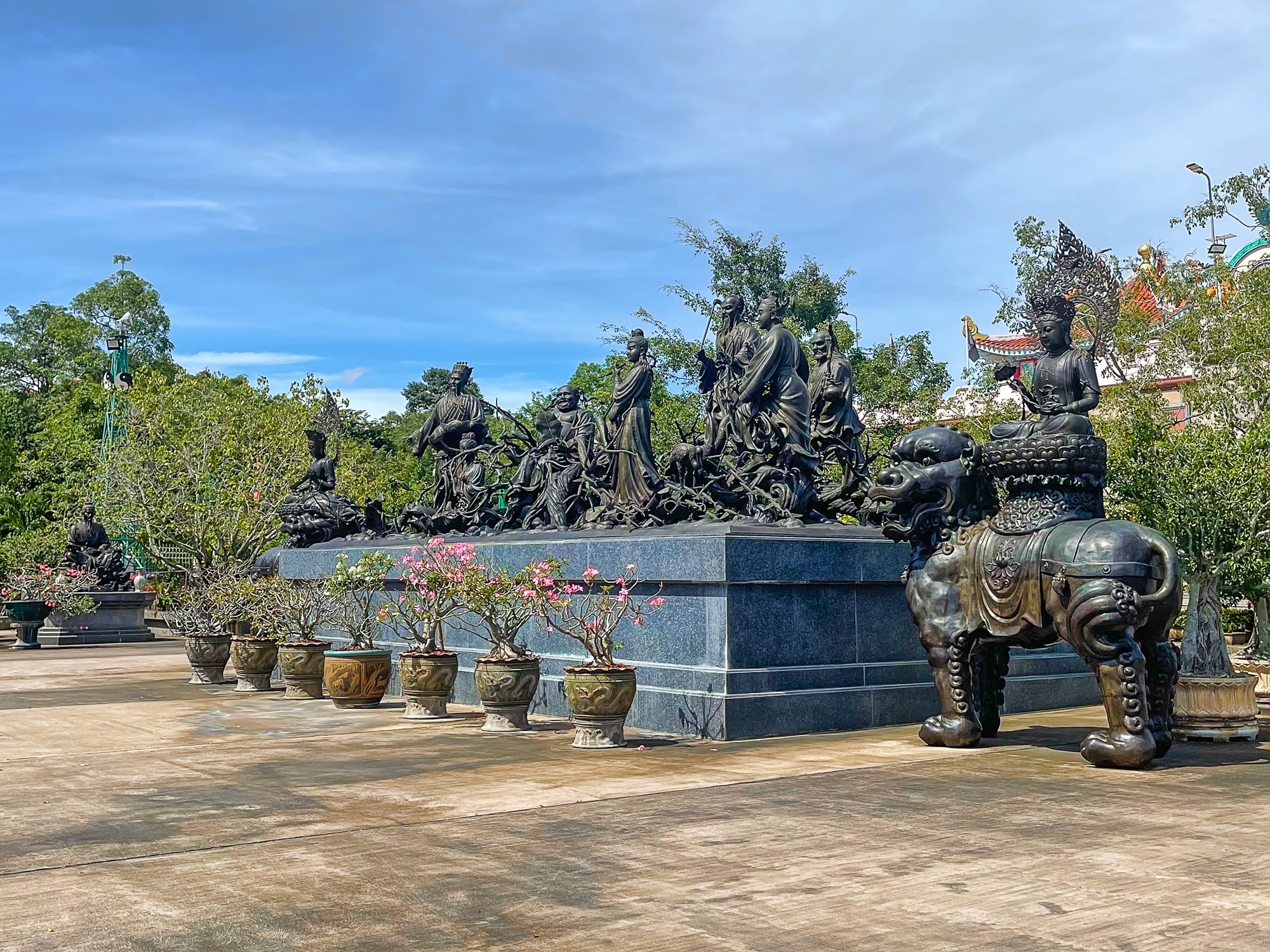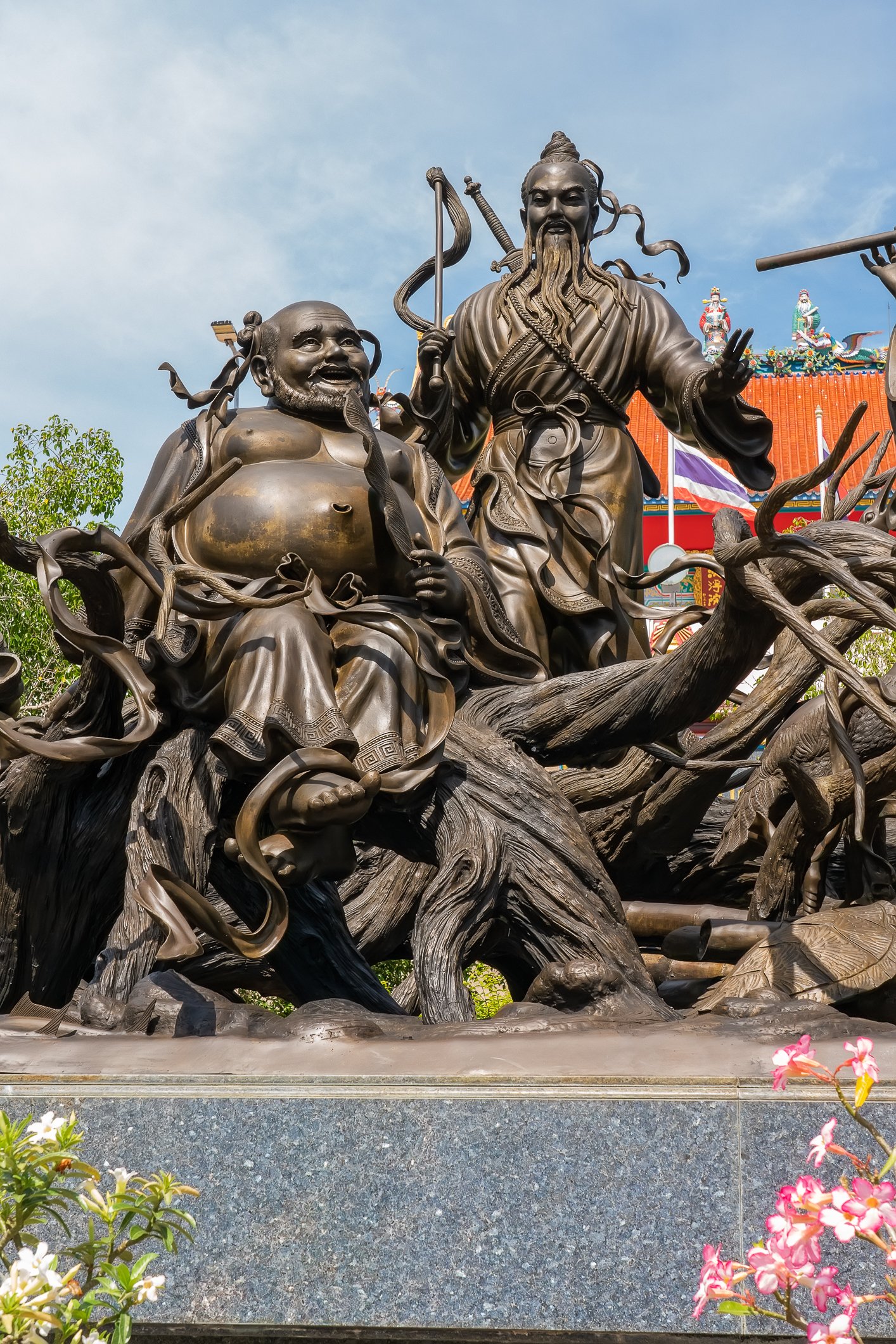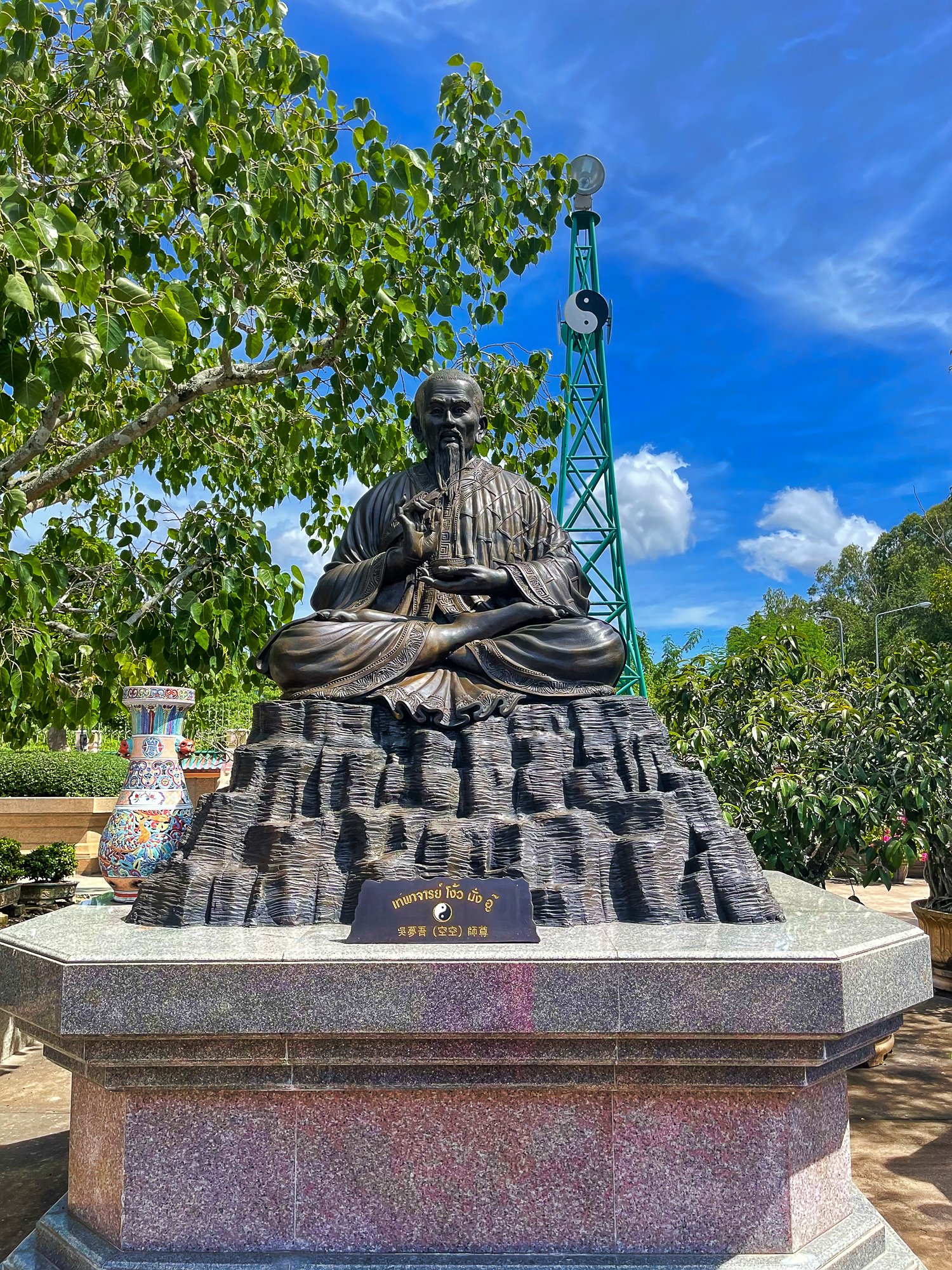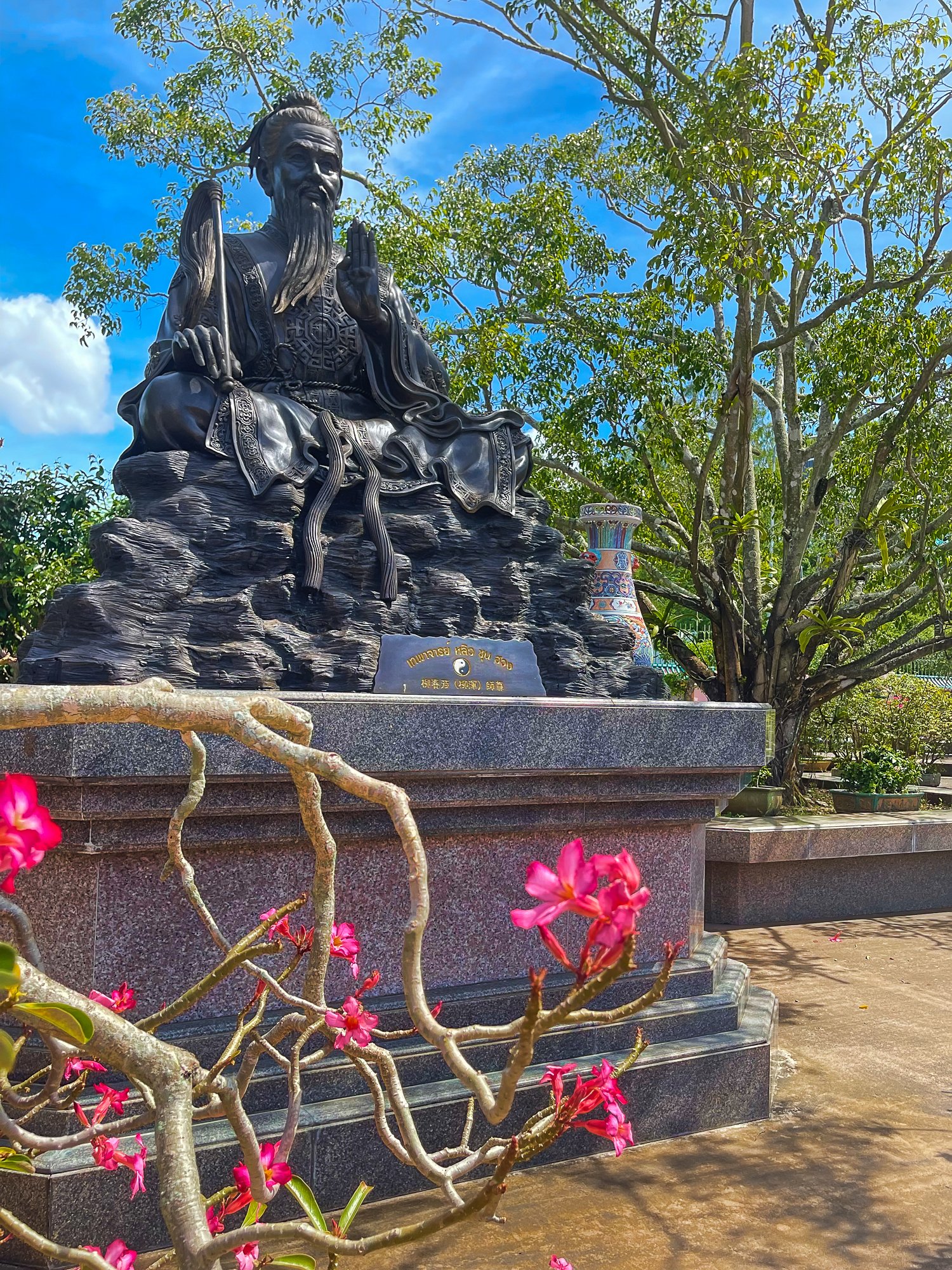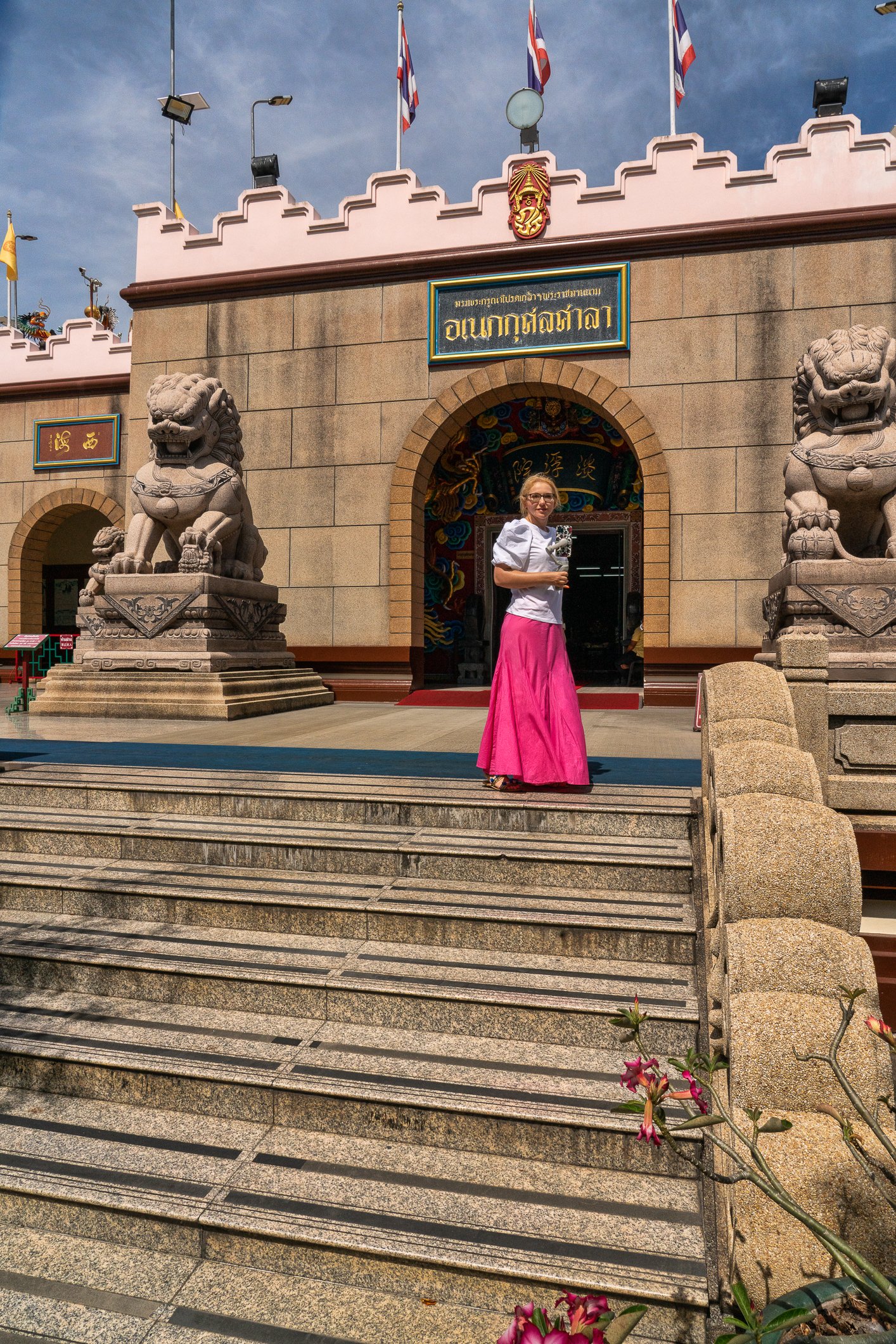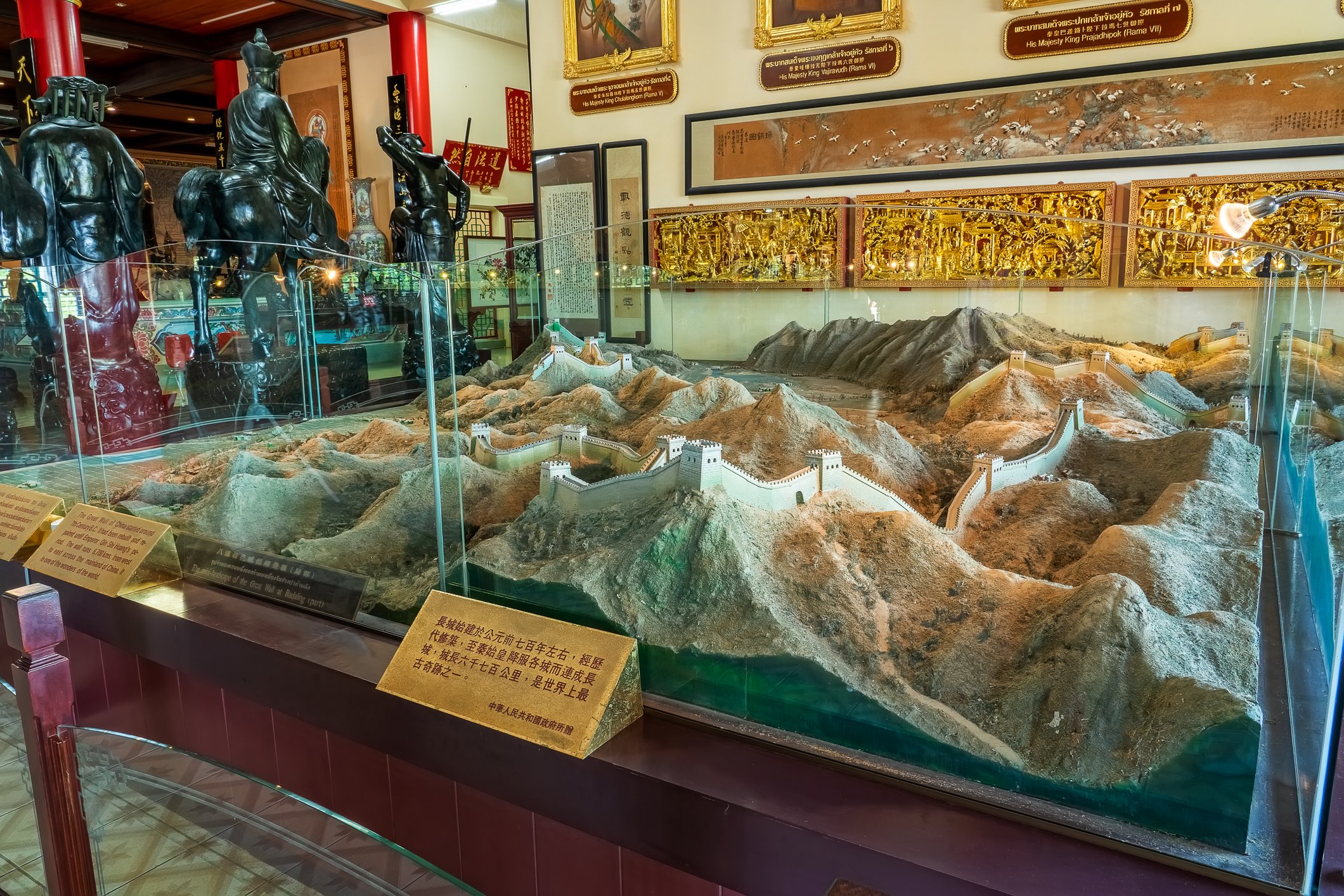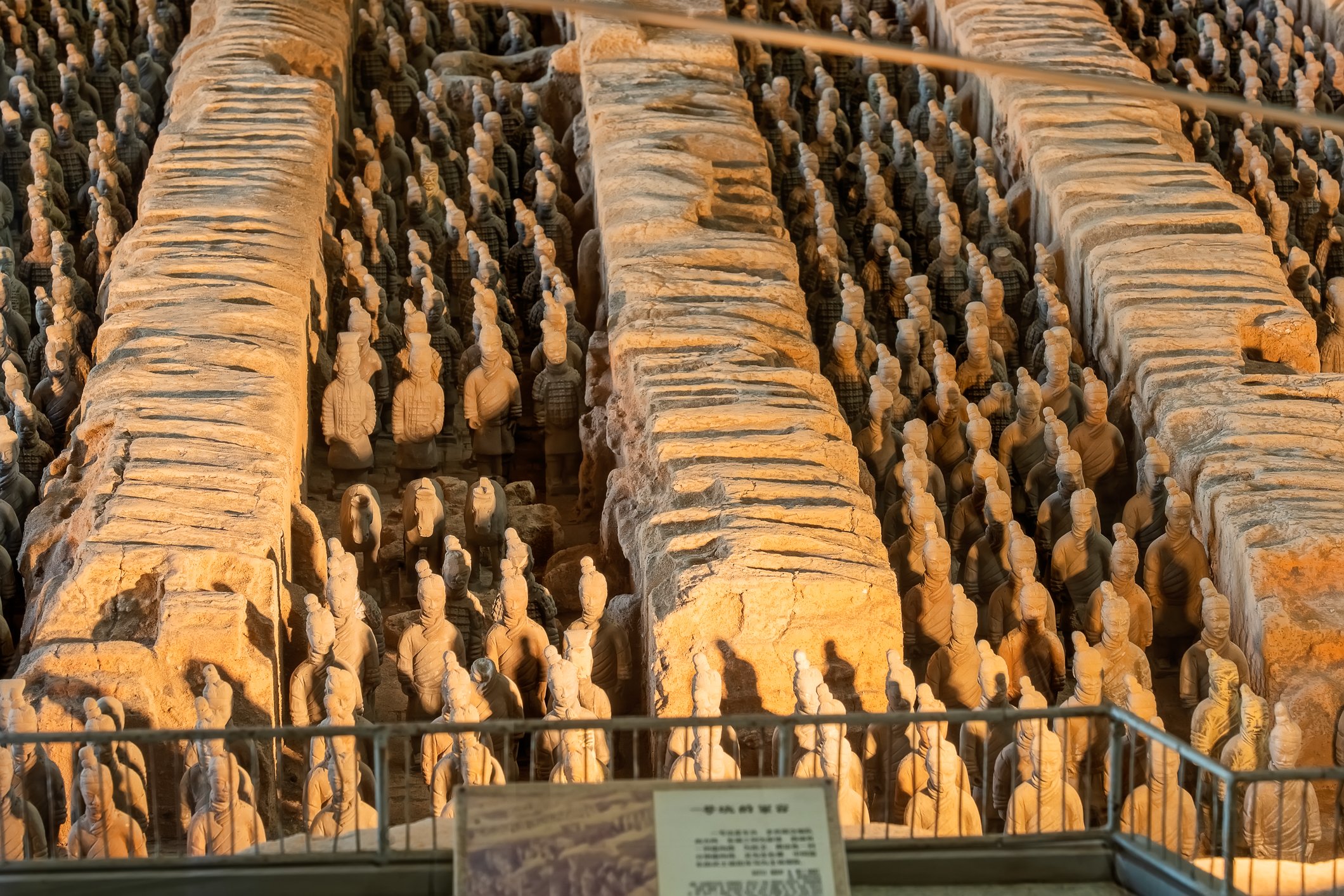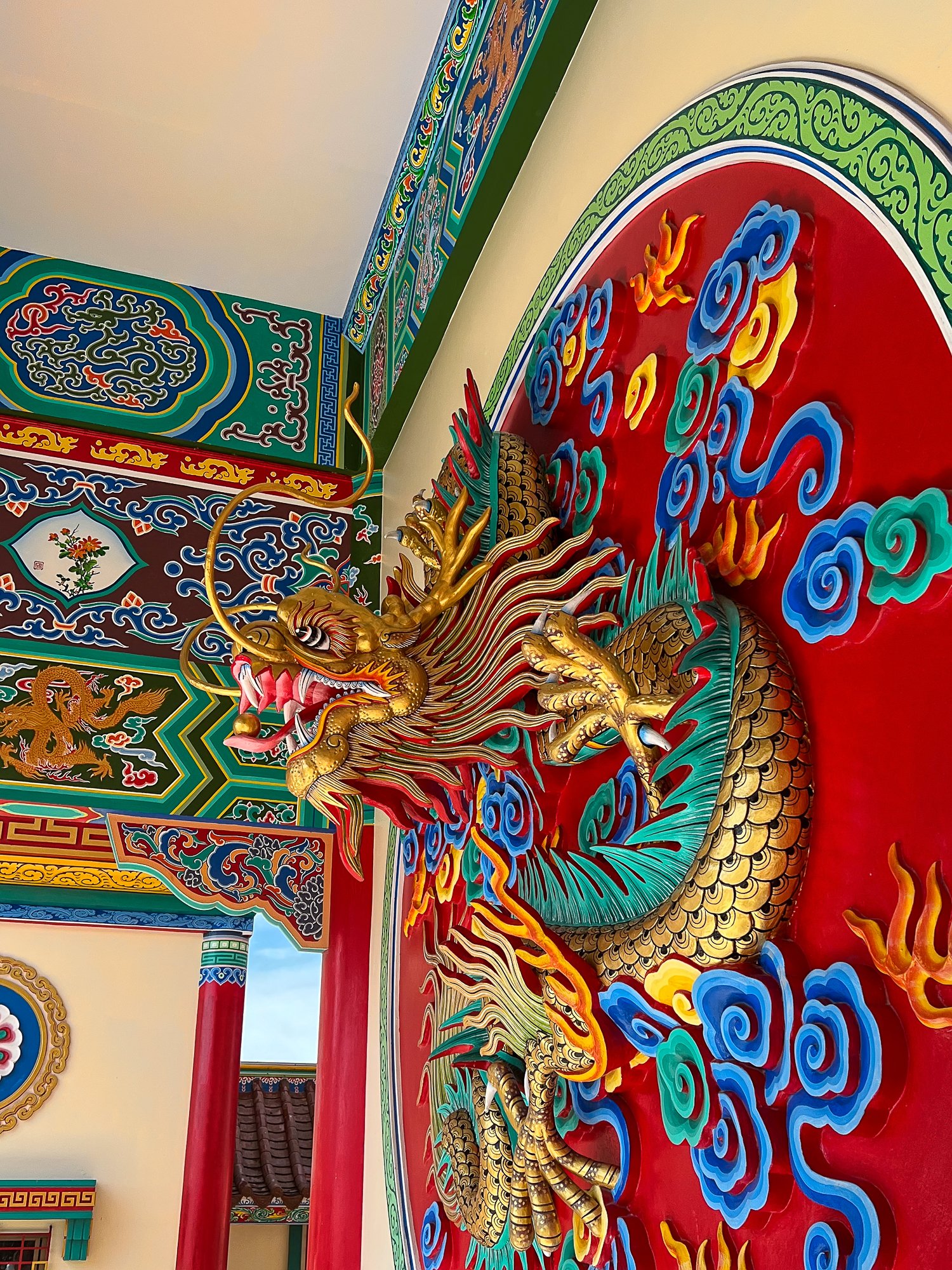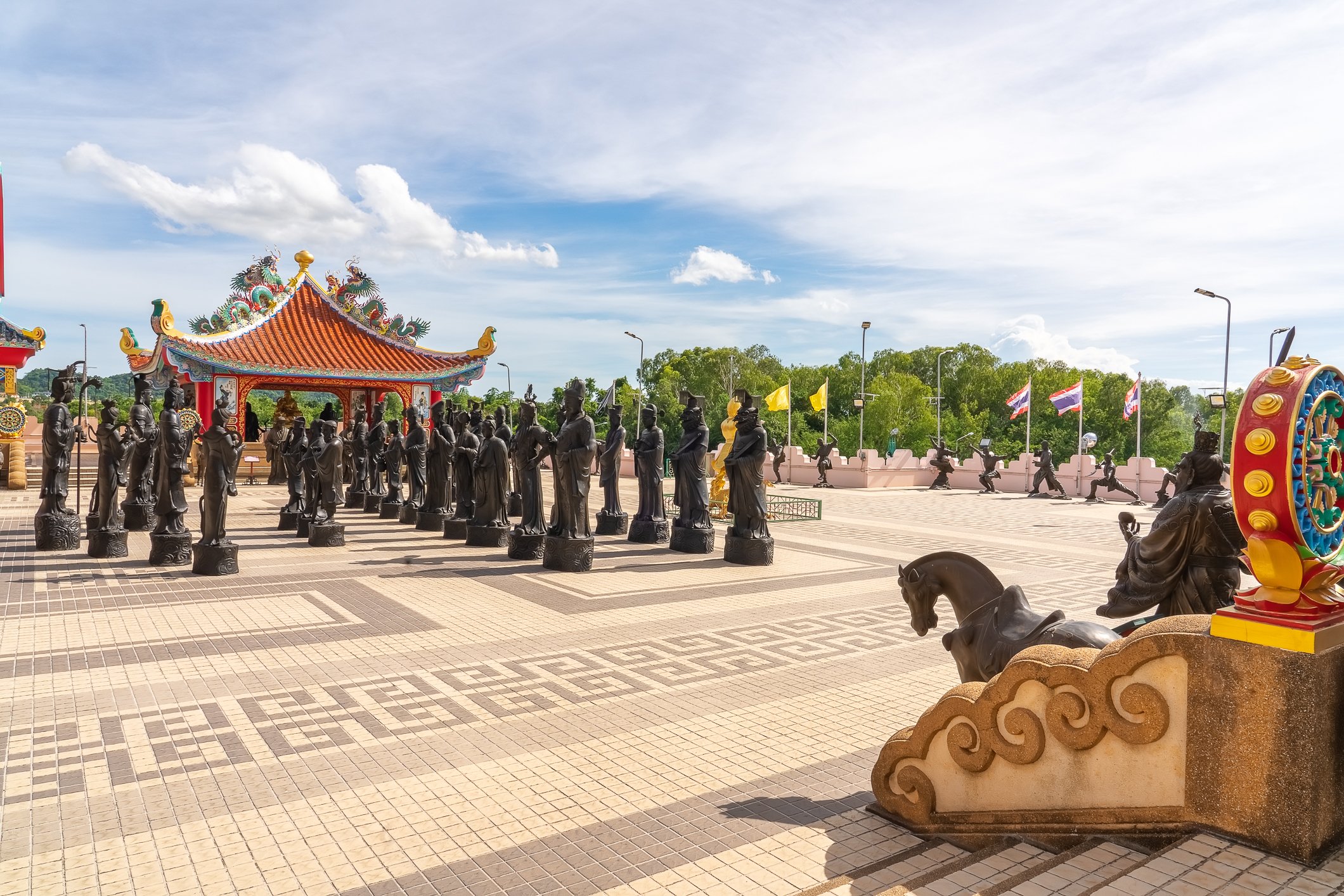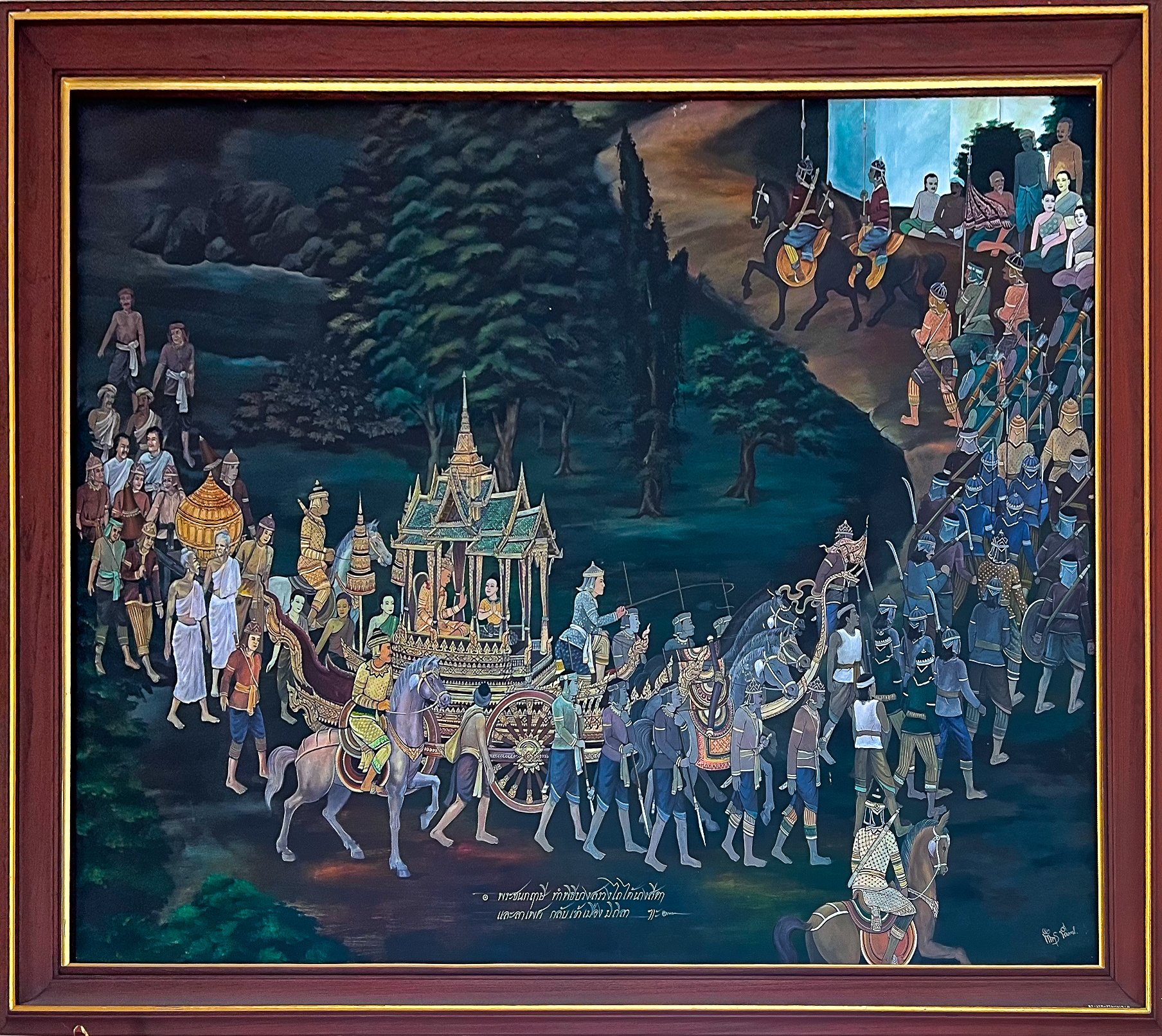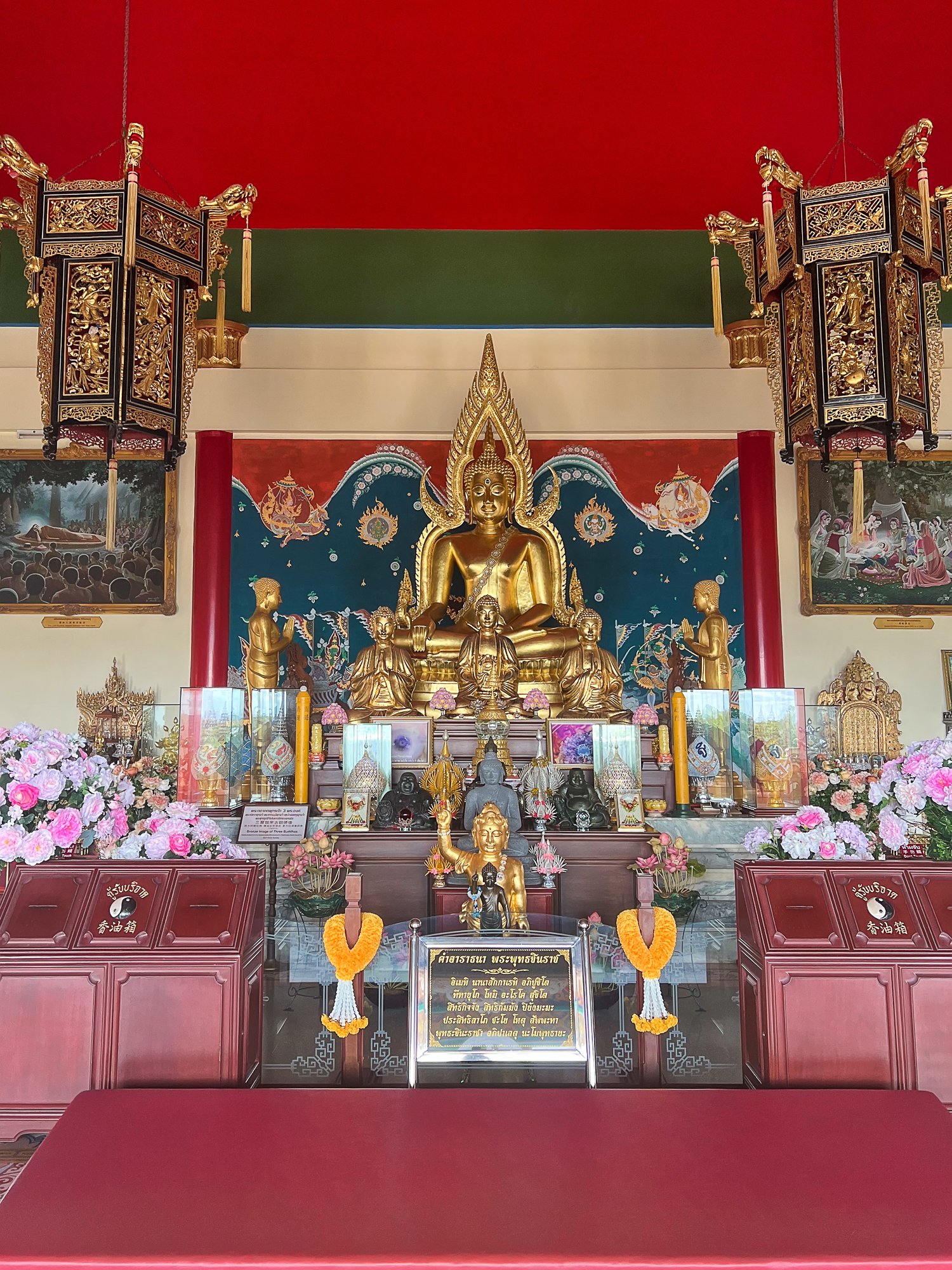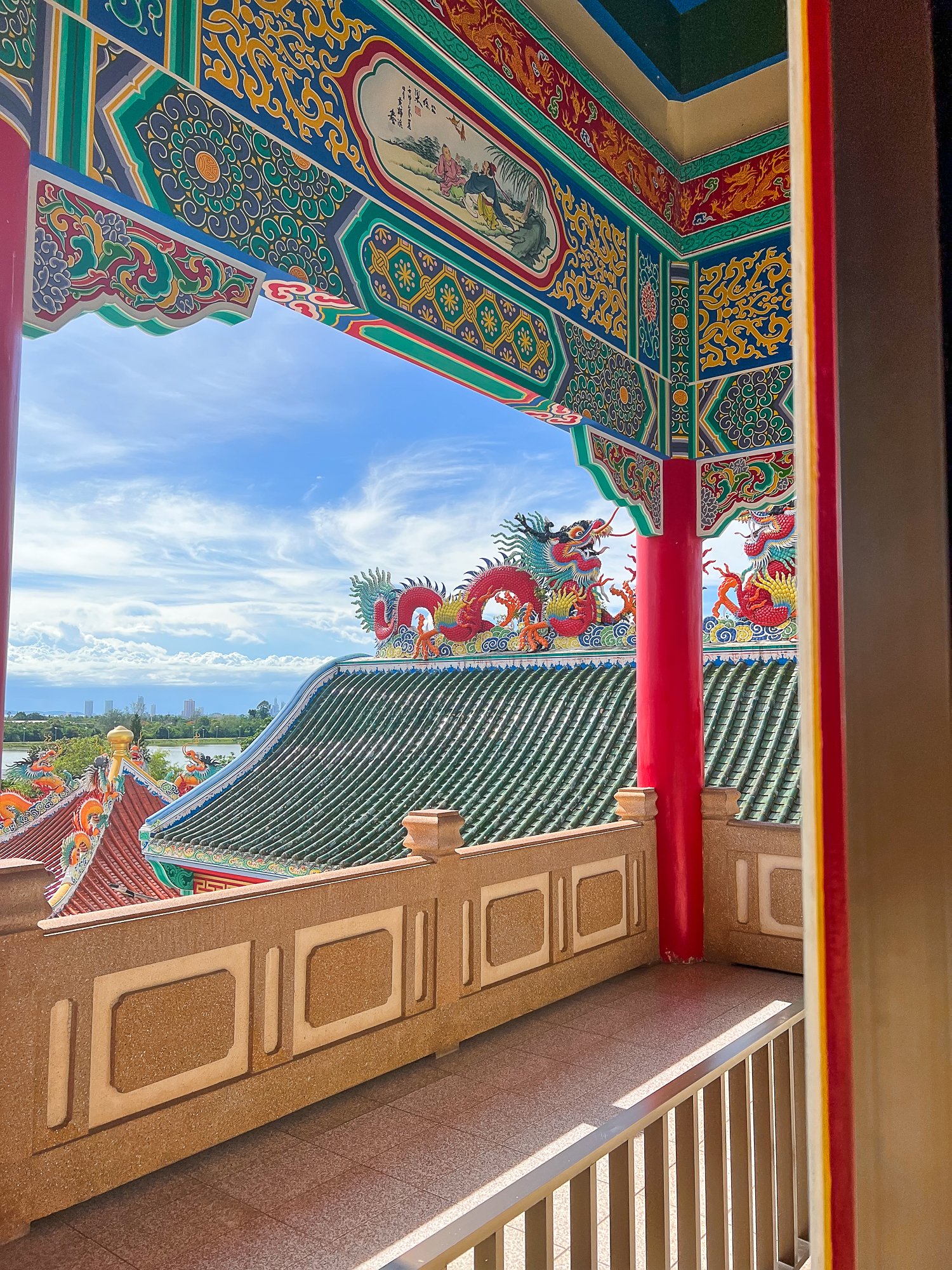The museum complex consists of three buildings: The Archaeology Museum, the Museum of Ancient Orient Works, and the Tiled Pavilion. There are also some interesting outdoor exhibits as well in the museum courtyard. We enter through big green gates e adorned with two golden Medusa heads.
Kompleks muzealny składa się z trzech budynków: Muzeum Archeologicznego, Muzeum Dzieł Starożytnego Orientu i Pawilonu Kaflowego. Na dziedzińcu muzeum znajduje się również kilka ciekawych eksponatów plenerowych. Wchodzimy przez dużą zieloną bramę ozdobioną dwiema złotymi głowami Meduzy.
The Museum of Ancient Orient was closed during our visit due to the restoration. As such, we started from the Archeology Museum hosted in the beautiful neoclassical building, housing an impressive collection of classical statues and sarcophagi.
This is not a random selection of items; it is a thoughtfully designed, uncluttered display of essential artefacts, well-lit and beautifully exposed, with huge paintings on the walls bringing context to what is showcased in every room. It is visual storytelling at its best.
Muzeum Starożytnego Orientu było zamknięte podczas naszej wizyty z powodu renowacji. W związku z tym zaczęliśmy zwiedzanie od Muzeum Archeologicznego mieszczącego się w pięknym neoklasycystycznym budynku i słynącego z imponującej kolekcji klasycznych posągów i sarkofagów.
Ta wystawa to nie jest przypadkowy zestaw eksponatów; to jest starannie zaprojektowany, nie zagracony pokaz najważniejszych artefaktów, dobrze oświetlonych i pięknie zaprezentowanych, z ogromnymi obrazami na ścianach, które nadają kontekst temu, co jest prezentowane w każdej sali wystawowej. To wizualne opowiadanie historii w najlepszym możliwym wydaniu.
At the entrance, we face a massive statue of the Egyptian god of fertility and war, Bes, from 500-600 BC, brought here from Cyprus. Naked Bes is holding a dead rabbit that somehow lost its head.
Przy wejściu stoimy przed masywnym posągiem egipskiego boga płodności i wojny, Besa, pochodzącym z 500-600 p.n.e., sprowadzonym tu z Cypru. Nagi Bes trzyma martwego królika, który w jakiś sposób stracił głowę.
Inside the first gallery, our attention goes to the sculpture of a wild lion from the Mausoleum of Halicarnassus, today’s Bodrum. This mausoleum was one of the Seven Wonders of the Ancient World.
W pierwszej galerii naszą uwagę przykuwa rzeźba dzikiego lwa z Mauzoleum Halikarnasu, dzisiejszego Bodrum. To mauzoleum było jednym z Siedmiu Cudów Starożytnego Świata.
The first floor tells a story of Istanbul through different historical periods. Here, the attention is drawn to many beautifully lit and presented classical statues.
Pierwsze piętro opowiada historię Stambułu w różnych okresach historycznych. Tu uwagę przyciągają zwłaszcza liczne klasyczne posągi.
Upstairs, we find vast exhibits of coins, medallions, decorations, many great Ottoman pieces, and artefacts from Anatolia, Troy, Cyprus, Syria and Palestine.
Na piętrze znajdują się bogate kolekcje monet, medalionów, dekoracji, wiele wspaniałych dzieł osmańskich i artefaktów z Anatolii, Troi, Cypru, Syrii i Palestyny.














